










Dear Audio Friends,
by Sarah and Michel
“Welcome to the 6th edition of the Toronto Audiofest, and what an exciting milestone it is! This year, thanks to your unwavering support, the Toronto Audiofest has expanded and is now taking place in not just one venue, but two—a sign of our thriving community and growing passion for highfidelity sound.”
Audio shows like this are the heartbeat of the audio hobby, bringing enthusiasts and professionals together in the most organic and dynamic way. “Here, innovation meets craftsmanship, where relationships are forged that push the boundaries of what’s possible to achieve in sound technology.” This is where new products are unveiled, knowledge is shared, and, most importantly, where we all come together to celebrate the joy of sound.
Our journey takes us back to 1893, to the Chicago World’s Fair, where Thomas Edison unveiled his phonograph, forever changing the way we experience music. Fast forward to 1949, when the first dedicated Audio Fair was held in New York City, evolving into today’s Consumer Electronics Show (CES). Closer to home, Canada’s own legacy of audio shows started in the early ‘80s in Montréal, and we’re proud to continue that tradition here in Toronto.
“Just as this print magazine, alongside the audio webzines and YouTube channels, keeps you informed and inspired, this show strives to bring the best of high-end audio technology to life, right in front of you. If you’re new to the quest for better sound, you’ve made the perfect choice by being here! Great music reproduction has the power to enrich every part of your life—soak in the experience, talk to the experts, and visit their stores. You’ll be amazed by their service and everything they have to ofer.”
We’ve packed this weekend with excitement! From our lively Prohibition Night, to Earvana, and all the fantastic free features—including the fun Con-Quest, Oktoberfest, Live Music, Free Ice Cream, and, of course, our 100 exhibitors showcasing their best work.
All the details are in these pages and on our website, so dive in, explore, and enjoy this vibrant community.
And don’t forget to mark your calendars for the Montreal Audiofest, happening from March 28th to 30th, 2025. We can’t wait to see you there for even more audio magic!
“Music is a moral law. It gives a soul to the Universe, wings to the mind, flight to the imagination, a charm to sadness, gaiety and life to everything. It is the essence of order, and leads to all that is good and just and beautiful.”
– Plato


ANDRÉ THÉRIAULT, LUNA CABLES

by Robert Schryer
OVER A YEAR AGO, IN RETURN FOR WRITING A REPORT ABOUT MY EXPERIENCE, I WAS WHISKED ON A JUNKET, ALONG WITH A CLUTCH OF OTHER AUDIO SCRIBES FROM OTHER PUBLICATIONS, TO DALI HEADQUARTERS IN DENMARK TO VISIT THE COMPANY’S FACTORY AND WITNESS THE WORLDWIDE LAUNCH OF ITS FLAGSHIP KORE LOUDSPEAKER. IT WAS A FUN TIME, AND THE KORES WERE IMPRESSIVE TO BEHOLD AND LISTEN TO.
However, it’s the Danish company’s 4½-way Epikore 11 loudspeaker, the model below the Kore and which shares many of the Kore’s technologies, that surprised and charmed me most when I heard a pair at 2023’s Toronto Audiofest. Obviously, the room helped. It was conference-room-size—large and spacious, ideal for these over 5’-tall, each weighing 75kg (165lbs) speakers to breathe and fully express themselves, while I heard the Kores in a room that was a bit small to allow them to perform to their full potential, although they did sound very promising. Hearing the Epikores left an impression on me and I wondered if I’d ever get the chance to hear them again.
Turns out I would hear them again, at the only Canadian store to currently have a pair: Audiophile Experts, located in the greater

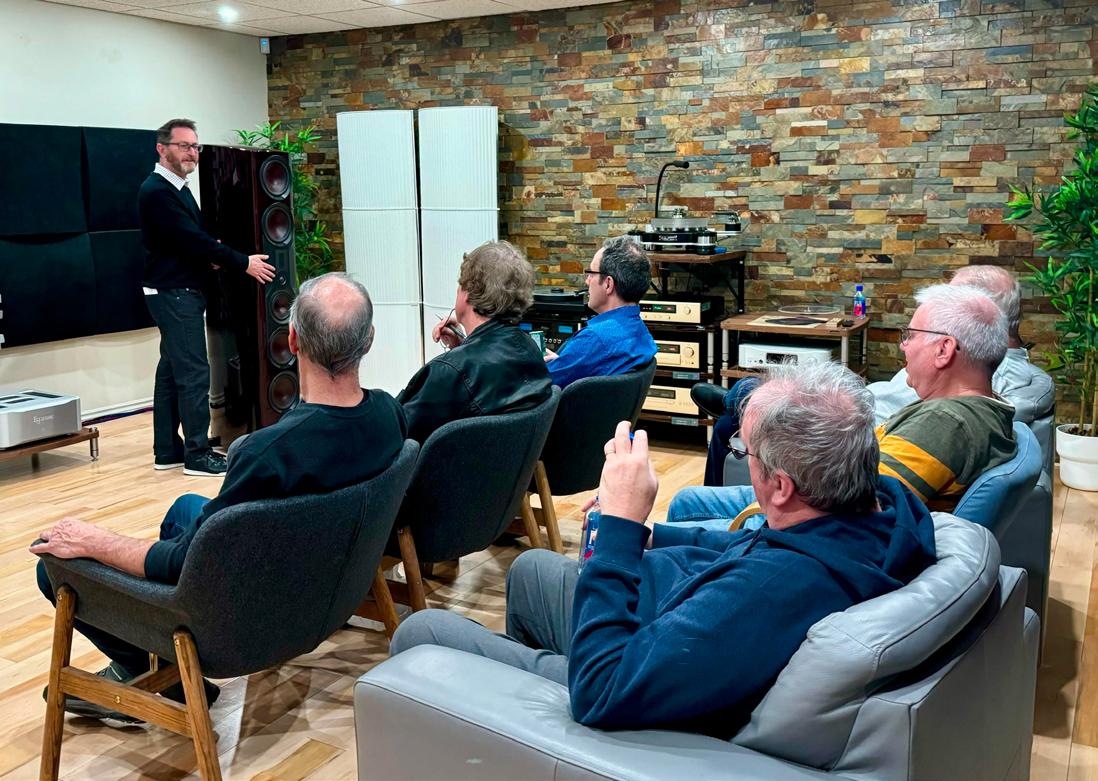
Montreal area. Joining me for the audition were store owners Mathieu and Stacy, along with DALI’s North American representative, Lenbrook’s Jason Zidle, and a couple of dozen visitors and friends. With only a handful of chairs set up to hear the Epikore-fronted system in one of the store’s demo rooms, we took turns listening to both Stacy and Jason describe the Epikore’s design and to a few tracks played through the system.
First of, the Epikore’s appearance, in my opinion, oozes class and distinction. It has a curved cabinet finished in a rich-toned, real wood veneer and a high-gloss finish. All the drivers were designed and made in-house, as was the speaker.
Extending the wood theme are the Epikore’s four woofers per side, tuned to slightly varying frequencies, whose material is made of the company’s paper-and-wood fibre cone technology. The woofers use the company’s proprietary SMC (Soft Magnetic Compound) in place of regular solid magnets, which produce eddy currents that can distort the signal. SMC is also used in the speaker’s crossover inductor cores.
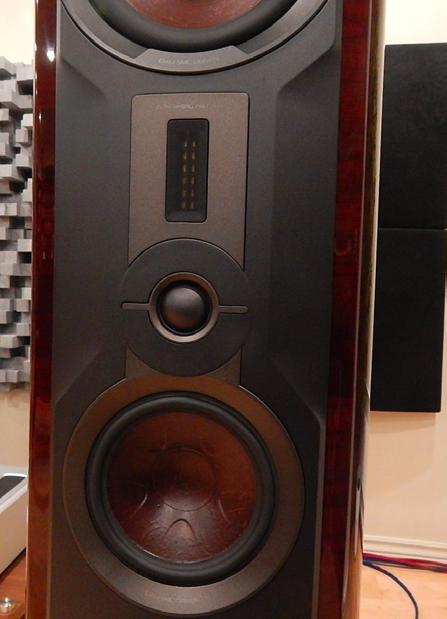
The speaker’s tweeter unit is the same as the Kore’s. Called the EVO-K hybrid tweeter, it combines a soft dome tweeter with a wide-dispersion planar element for greater
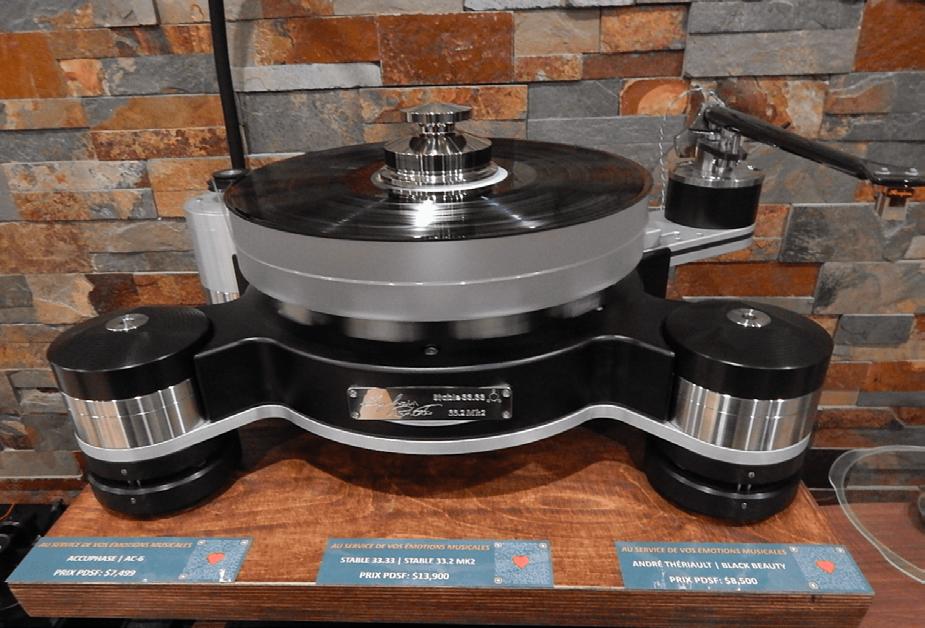
treble extension. Spec-wise, the Epikore’s bass is said to extend down to 29 Hz, while the speaker’s sensitivity is rated at 89dB into 4 ohms.
While it wasn’t physically possible for the Epikores to sound quite as open and expressive as they did in that Toronto showroom, I did get a good dose of the magic I’d heard in Toronto. The Epikores are designed to be positioned facing forward, which, both in Toronto and here, resulted in the projection of a large, transparent soundstage replete with spatial information and fine detail. Some studio efects seemed to pop out of nowhere, vivid and dimensional, landing in unexpected places across the room in a way that sounded completely liberated from the speakers. On material with deep bass, such as John Rutter’s “Requiem: Pie Jesu” streamed via Qobuz, cer-

tain frequencies went so low they were inaudible—they rumbled, from the floorboards into my extremities. It was impressive.
On a Qobuz stream of Tower of Power’s “Diggin’ on James Brown”, vocals were rich and explicit, dynamics were sharp, percussion was punchingly impactful. Next, we listened to The King James Version, a Directto-Disc, Shefeld Lab LP by Harry James & His Big Band. According to the notes I took at the time, the album’s track “Corner Pocket” delivered crazy dynamics, propulsive swing, true-to-life instrumental timbre, and played loud without strain, on either the system or my ears.
The DALIs, of course, didn’t dance alone. They were well driven, in signal and power, by a team of components of equally high pedigree, each of which I’ve heard in previous
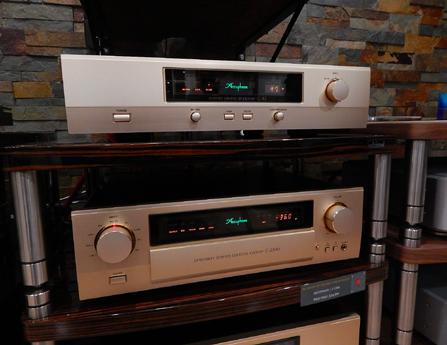

configurations to great efect. Among them was a vinyl front-end comprising a Stable 33.33 33.2 Mkll turntable fitted with an André Thériault Black Beauty Mkll tonearm and Accuphase AC-6 m/c cartridge. Doing digital duties were an Esoteric N-05XD network
DAC / preamp and Esoteric G-05 master clock generator, while electronics consisted of a 65Wpc, class-A Accuphase A-80 amplifier, an Accuphase C-2300 preamplifier, and an Accuphase C-47 mm / mc phono stage. Ty-
ing everything together was a bevy of cables from Luna Cables’ Mauve and Rouge series. It all amounted to spectacular sound and a lot of fun. If you get the chance, I suggest you give the DALI Epikore 11s a listen. I think they’re great speakers. Luckily, I’ll be able to hear pretty much this whole system again at the 35th edition of the Montreal Audiofest, being held March 22 to 24.
• DALI Epikore 11 loudspeaker ($80,000)
• Accuphase C-2300 preamplifier ($14,999)
• Accuphase A-80 amplifier ($27,999)
• Accuphase C-47 phono stage ($12,999)
• Accuphase AC-6 m/c cartridge ($7,499)
• Stable 33.33 33.2 MK2 turntable ($13,900)
• André Thériault Black Beauty Mkll tonearm ($8,500)
• Esoteric N-05XD network DAC / preamp ($14,850)
• Esoteric G-05 master clock generator ($6,750)
• Luna Cables Mauve et Rouge cables ($various)
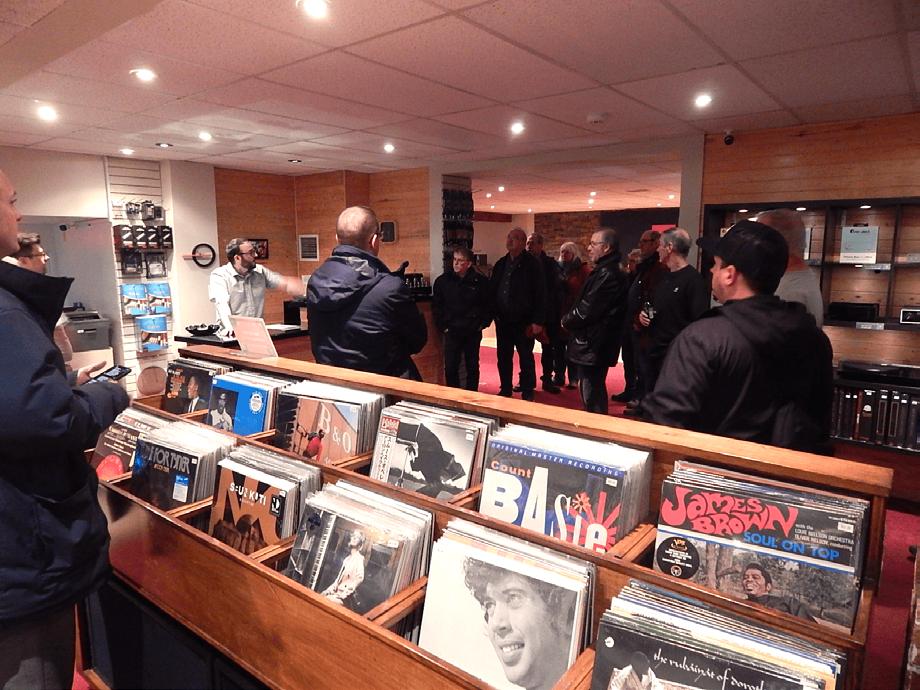
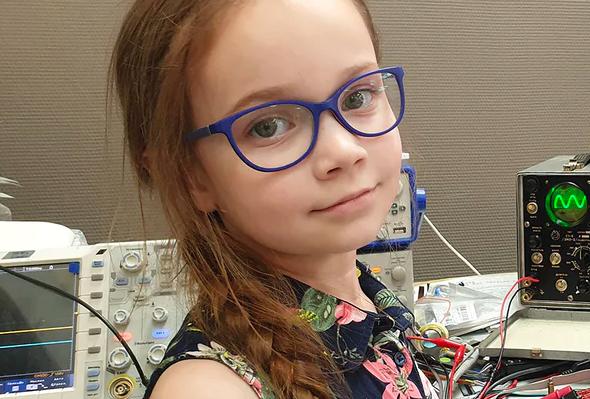
This article from Paul McGowan frst appears in Copper Magazine


IN OUR WORLD OF HIGH-END AUDIO, WE OFTEN FIND OURSELVES TANGLED IN THE WEB OF SPECIFICATIONS, MEASUREMENTS, AND TANGIBLE DATA. AS A SELF-ADMITTED CRAZY AUDIOPHILE AND A 50-YEAR VETERAN IN DESIGNING AUDIO EQUIPMENT, I’VE ALWAYS BELIEVED THAT WHILE NUMBERS AND GRAPHS ARE CRUCIAL, THEY DON’T TELL THE WHOLE STORY. THERE’S A WORLD BEYOND THE MEASURABLE – WHAT I LIKE TO CALL THE UNMEASURABLE ASPECTS OF SOUND.
Let’s start with the emotional response to music. It’s a universal truth that music can evoke a range of emotions, from the deepest sorrow to the heights of joy. But how do you measure the goosebumps you get when listening to a live recording of your favorite band? Or the tear that trickles down when a familiar melody reminds you of something in your past? These reactions are profoundly personal and beyond the scope of any meas-
uring device. As audiophiles, we often seek equipment that can recreate this emotional resonance, making us feel as if the artist is performing right in front of us.
It’s the essence of what we’re all about. The “live vs. recorded” debate is another area where the unmeasurable aspects come into play. Many argue that no recording can capture the magic of a live performance. There’s
truth in this; a live concert is not just about sound. It’s about the energy in the air, the interaction between the artist and the audience, and the collective experience of being part of something unique. However, high-fidelity sound systems strive to bridge this gap (and sometimes exceed it). The goal is to reproduce sound so accurately that you close your eyes and feel as if you’re there, amidst the crowd, feeling every beat and every note in your core. This “presence” is something we cherish, yet it defies quantification.
How do you measure that?
Then there’s my favorite, the aspects of “soundstage” and “imaging.” These terms refer to the ability of an audio system to create a three-dimensional auditory space. A well-set-up system can place each instrument and voice in its own distinct spatial location, much like in a live performance. How do you quantify the breadth and depth of this soundstage or the accuracy of imaging? Sure, there are measurements for channel separation and frequency response, but they hardly scratch the surface of what you experience when a sound system gets it just right, creating a holographic illusion of a live performance.
Another unmeasurable aspect is the timbre of sound. Timbre refers to the color or quality of sound that makes a particular musical instrument or voice distinct. It’s what makes a piano sound diferent from a guitar, even if they’re playing the same note. High-end audio equipment aims to reproduce these timbral nuances faithfully, but how accurately it does so cannot be fully encapsulated by numbers (though one could argue that phase accuracy and harmonic faithfulness might qualify). It’s more about the listening experience, about recognizing and appreciating the subtleties in diferent instruments’ sounds.
Lastly, let’s talk about the personal connection we have with our audio systems. For many of us, our sound systems are more than just a collection of components; they are a gateway to our past experiences, memories, and emotions. The warmth of a tube amplifier might remind someone of their first encounter with high-fidelity sound.
Think about the first high-end audio component you ever purchased or the first time a piece of music truly moved you through a quality system. These experiences often mark significant milestones in our lives. For instance, I recall the first pair of high-fidelity speakers I ever encountered. A pair of JBL corner horns playing Edgar Winter’s “Frankenstein.” A truly life-changing event for me.
The process of building and curating a sound system is deeply personal. Each choice, from selecting a DAC to finding the right cables, reflects our individual preferences, our unique approach to sound, and our interpretation of what music should feel like. It’s akin to creating a piece of art; every component is a brushstroke that contributes to the final masterpiece. The system becomes a reflection of our personality, our tastes, and even our philosophy towards music and sound.
The personal connection also extends to the rituals and experiences associated with listening. For many of us audiophiles, listening to music is not just a passive activity; it’s an immersive ritual. Dimming the lights, selecting a record, adjusting the volume, and settling into our favorite listening spot – these acts transform listening into a meditative, almost sacred, experience. It’s a time when we disconnect from the hustle and bustle of the world and connect deeply with the music. This ritualistic aspect adds a layer of personal significance to the experience, making it about more than just sound quality.
While the quantifiable aspects of high-end audio equipment are undeniably important, they don’t provide the complete picture. The unmeasurable aspects – the emotional response, the live vs. recorded debate, soundstage, timbre, and personal connection – are equally vital in shaping our audiophile experience. They remind us that at the heart of our pursuit for perfect sound lies not just a quest for technical excellence, but also a deep, emotional journey through the world of music and memories. It’s these unmeasurable aspects that transform a mere listening session into an experience, taking us on a journey that’s as personal as it is profound.

by Robert Schryer
THIS WAS THE INTRODUCTORY EMAIL I RECEIVED FROM THIS INSTALLMENT’S GUEST, JESÚS (PRONOUNCED LIKE A CALL TO A GREEK GOD—”HEY-ZEUS!”): “HELLO ROBERT, JUST READ YOUR [LATEST INSTALLMENT OF “NO, I HAVE THE BEST SYSTEM…”] AND LOVED IT! I LIVE IN ST MARGUERITE DU LAC MASON (IN QUEBEC, NORTH OF MONTREAL), AND I HAVE MY LITTLE SYSTEM WHICH I LOVE! HOPE WE GET IN TOUCH.” I IMAGINED THAT LITTLE SYSTEM HAVING FOUR, MAYBE FIVE, COMPONENTS. SO, IMAGINE MY SURPRISE WHEN THE LIST HE SUBSEQUENTLY SENT ME WAS AS LONG AS AN ANCIENT SCROLL THAT HAD UNFURLED TO THE GROUND. LISTED ON IT WERE OVER 25 COMPONENTS, INCLUDING 6 SUBWOOFERS AND 13 SPEAKERS, ENOUGH TO ACCOMMODATE JESÚS’S 7.6.6 SURROUNDSOUND ATMOS SYSTEM ADJUNCT TO HIS STEREO.
When I wrote back and asked where he found the place to put all that stuf, he replied:
“My house has become too small! We bought this house as a project to renovate it and we will start the construction of our new one next year. I will have a dedicated room for all this. In the meantime, I am taking a big part of our living room and wife is not very happy.” I bet.
“I will have a nice Japanese whisky ready!” he added, as if to entice me further. “‘Nice,” I thought. “A perk.” I packed my bags and set
the controls for the heart of the sun—toward the bucolic Laurentian Mountains.
It was a maze-y drive to get there, all twists and turns on upward-slanted roads in a semi-forested area that eventually led into Jesús’s gated community. Greeting me at his home was Jesús himself, looking dapper in a perfectly fitting beret and handkerchief-bearing blue suit over a Maxell “Blown Away Guy” T-shirt. As we sauntered into his open-concept listening room, I got a flashback to his wife’s gripe. The stereo / home cinema setup takes up a good portion—all
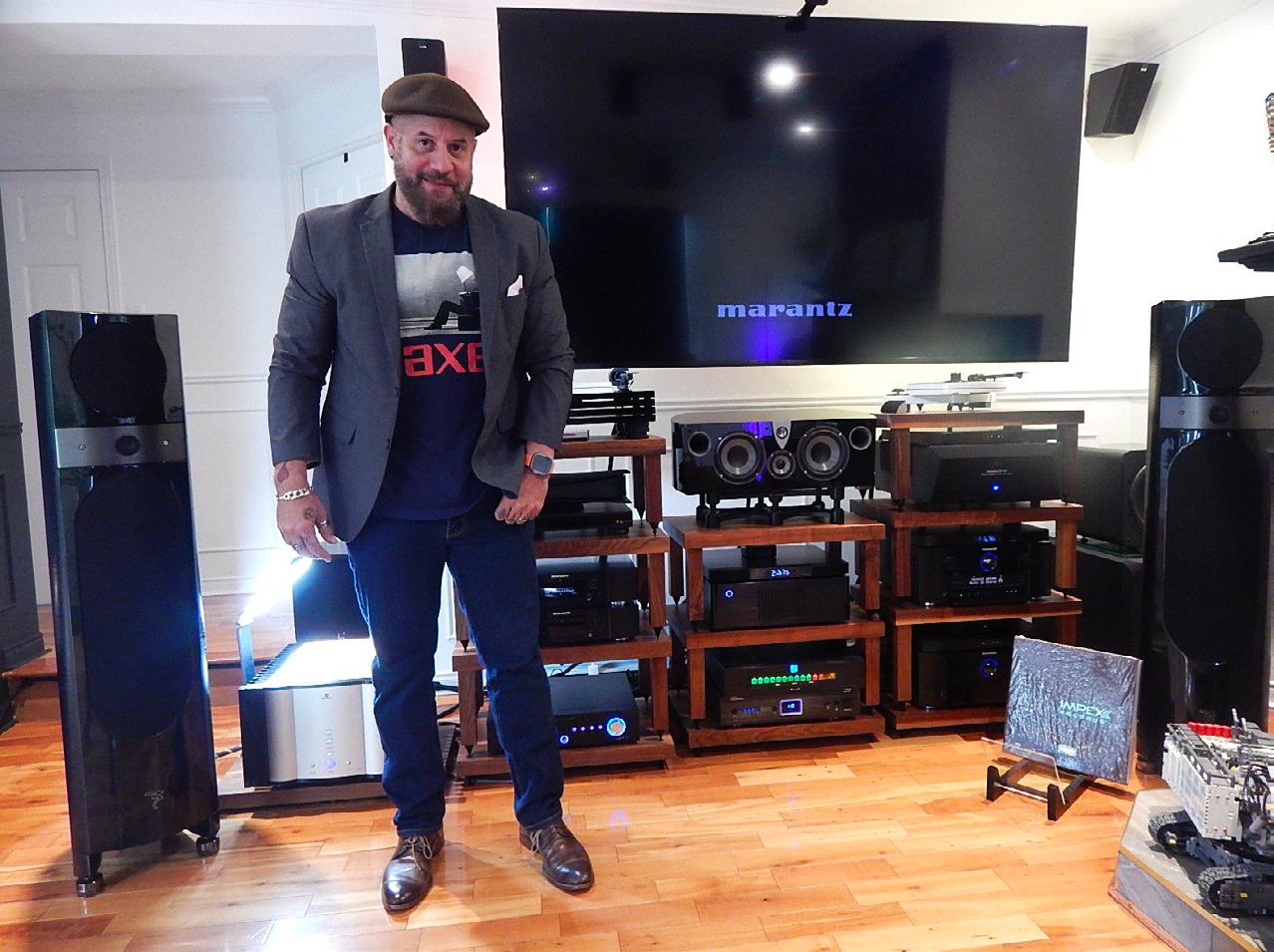
of it, really—of the couple’s living room.
There were speakers everywhere! On the walls, floors, and ceiling. It was like staring at a shrunken version of the inside of the Las Vegas Sphere. I thought: ‘Man, Jesús’s wife is so lucky!’.
While I was keen to hear the surround-sound setup with music—for my visit, Jesús had set aside an Atmos Blue-Ray version Pink Floyd’s Dark Side of the Moon— my primary focus, for this article, was on the stereo side of things. Equipment-wise, that included a ToneWinner AD-1PA 2-channel amplifier, an Emotiva USP-1 preamplifier, a Graham Slee AMP 3 Fanfare phono stage, a Music Hall MMF-11.1 turntable with Hana ML cartridge, two SVS 1000 Pro subwoofers, a Sony 4K UHD Blu-Ray player, and a pair of Focal Electra 1038Be speakers (Jesús: “The Focals are my babies and I love their sound).
A native of Venezuela, Jesús immigrated to Canada in 2004. The first thing I asked, at his home, was when he got bit by the audio bug. “I was very young,” he said, handing me my glass of Japanese whisky (more like butterscotch—that’s how smooth it was).

“My father, who listened a lot to music, was the first person who influenced me in my taste in music and audio. We had a very nice stereo at home that had an Optonica receiver and tape deck—do you know Optonica?” When I shook my head, he added, “It was a high-end range made by Sharp. We also had a Lenco turntable. I thought the sound was amazing, and I started buying records when I was 12 years old.
“Then my brother went to live in the States to study,” he said. “When he would return to Venezuela, twice a year, he brought music. He introduced me to Rush, Led Zeppelin, Genesis, and stuf like that.” Bobbing his head as if he was hearing the music for the first time again, he said: “I was like, okay, this is nice music. And the funny thing is, I couldn’t understand English. So, I used a dictionary, and I would translate the lyrics on the vinyl sleeves. That’s how I started to learn English.”
Following his love afair with his father’s system, Jesús experienced another pivotal moment in his audio awakening, again due to his US-based brother. “He came back
with a JVC CD player. At the time, it was the best-selling CD player,” said Jesús. ”This was in the ‘80s, and I was the only one in my neighbourhood to have a CD player, so all my friends would come over and say, ‘hey, what is that?’. They were curious.
“So, after buying vinyl for 2-3 years,” Jesús said. “I switched to buying CDs. It’s only when I came to Canada that I started buying vinyl again. I worked in downtown Montreal, and I was always walking by this store that had a Thorens turntable in the window. I’d stop and look at it and say, ‘one day you’re going to be mine.’ And when I had the money, I bought it.
“The first vinyl I bought in Canada was Dire Straits’ Brothers in Arms at HMV. After, I discovered the (record) store Aux 33 Tours on Mount-Royal. I used to go there all the time, but now that I live [in the Laurentians], I buy my vinyl mostly online.”
Did that mean that he listened more to vinyl now than digital? “It depends,” he said. “I do a lot of streaming—in the car, or with my family in the kitchen. It’s background music. To sit down and listen to streamed
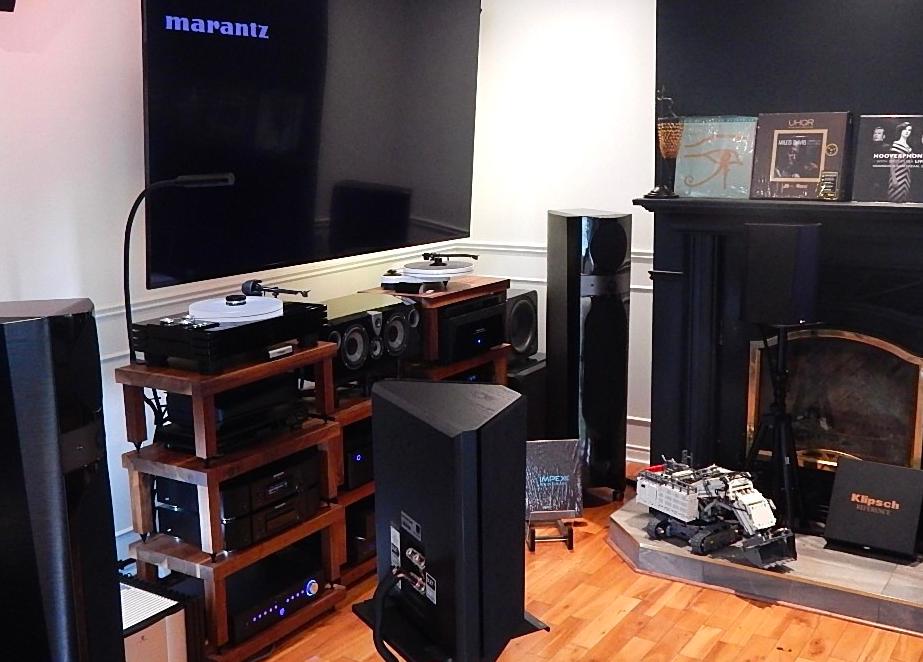
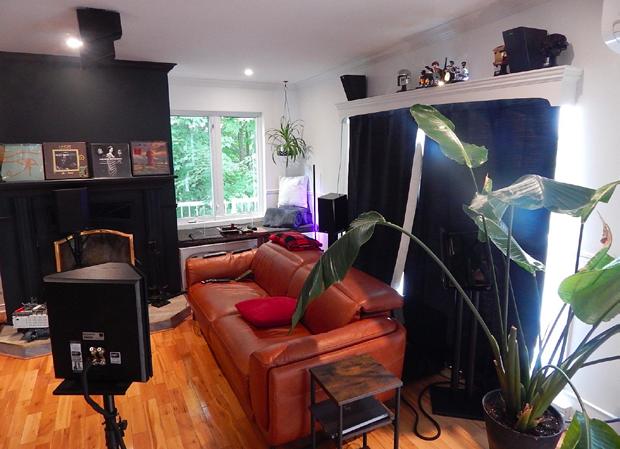
music? No, I can’t do that. For [serious listening], I listen to vinyl. I like the ritual of standing up, pulling out my vinyl from the shelf, taking it out of its sleeve, putting it on the platter. Sometimes, I clean my records. It’s a lot more personal than streaming.”
I asked how he chose his equipment. “I did research on the Internet,” he said. “I wanted to improve what I had, so I started looking around for speakers and I found the Focal Electra 1038Be. When I heard them, I was like, ‘wow’. They weren’t cheap but the quality is very good.”
I told him I very much liked the look of his component racks. “The guy who made them is from Quebec,” he said. “But I don’t think he makes them anymore. It wasn’t cheap, either, but I like the style.” I thought it enhanced the look of his system, much like how the clothes Jesús was wearing made him look spify.
“You know, everything costs money”, he said, glancing at his system. “Even the cables. You hear some people say that cables are very important. Others say, ‘nah, a cable’s a cable. Why do you spend $5000 on a cable when the cable in the wall isn’t a good cable?’ I’m in the middle. I have cables by AudioQuest, Klipsch, and Furutech—but $5000 for a cable?” He cocked a suspicious eye at me and said: “I don’t know. I think some companies take advantage of people.
“It’s also very subjective,” he added. “What may sound high-end to me may not sound high-end to you. And if you can’t hear the diference, you shouldn’t buy an expensive cable.”
Any good tweaks or accessories he could recommend?
“The PS Audio PowerPlay IPC-9000 AC conditioner. I used to sometimes hear a ‘ground’ buzz from my system and it stopped when I put it in. I also have a Panamax conditioner, but it’s nothing compared to the PS Audio. Again, the PS Audio wasn’t cheap, but I could hear the diference. The quality of the electricity here is very bad and the PS Audio helped a lot.”
Was he content now with the level of his system’s performance?
“I can tell you I’m happy with what I have,” he said.
So, no compulsion to upgrade anything?
“There are always upgrades,” he said. Because there was something he wasn’t happy with?
“No, it just hits the nerves sometimes,” he said, making his hands tremble like those of a jonesing addict. “I need to, I need to, I need to. You know what I mean.
“For example, my Thorens turntable was good. I sold it. I replaced it with a Pro-Ject RPM 1 Carbon. Then I moved the Pro-Ject to my ofce system and bought the monster Music Hall 11.1.”

The Music Hall is a very nice ‘table, I told him.
“It’s a monster,” he replied, afectionately, making the Music Hall rig sound like a keep-

er. “It came with the carbon-fibre tonearm and I added a Hana ML cartridge. The sound is something. It’s like… it’s like this,” he said, raising his glass of Japanese whisky.
I asked what it was about his system that he liked best. “I like the deep bass the speakers deliver and just the quality of the sound. I had diferent speakers in my life, and I can tell you the sound quality now is ‘wow’—for me.”
I took a smooth sip of my whisky and plunked myself down on the listening couch. With his system in 2-channel mode, Jesús the emcee spun a series of silver and black discs. On a Miles Davis LP, I heard sweet, textured trumpet tone and a spacious, musically bold presentation. I heard power, drive, and a wall full of sound erected in front of me from a Depeche Mode CD. And on a Mobile Fidelity version of the first record Jesús bought in Canada, Dire Straits’ Brothers in Arms, I heard a wealth of scintillating detail and instruments that popped out from the background with shape and aliveness. Over other tracks across diferent LPs and CDs, the most notable characteristic I would attribute to the system’s overall sound was its fullness—of notes, soundstage size, low-end energy, and an underlying sense of musical synergy.
I heard a similar fullness, but one very much diferent in the way the music was spatially distributed in space, after Jesús flicked on his Atmos surround-sound system with its six subs engaged and via a Blu-Ray Atmos disc played the pulsating heartbeat— actually, Nick Mason’s bass drum hits—that opens side 1 of Pink Floyd’s DSOTM. I felt
myself submerged at the centre of it, with the heartbeat growing deeper and larger and then looming over me. “Money” was just as big and enveloping, with powerful bass and sound efects that clanged and spun and soared in a sphere around me—a shrunken Las Vegas Sphere. It was trippy, for sure.
By the end of it all, I was reminded of the 3-letter word Jesús evoked a couple of times before: ‘Wow’.
When I complimented his setup, Jesús smiled and nodded appreciatively, then said: “I will probably keep the Focals, but the rest of my system for sure I’m going to change.”
“Whaa?” I asked, taken aback. “You would only keep the speakers?”
“The speakers and maybe the ToneWinner amplifier, which replaced a McIntosh MC462.”
“You’d change the turntable?”
He shrugged. “I’d like to have an Oracle, or something like that.” Then, with a sheepish smile, he dropped his head forward, and mumbled something with the words ‘wife’ and ‘approve’ in it. I thought: ‘Did Jesús just say his wife approves? What a lucky guy!’.
Advice for readers?
“Go to the store and try several systems to see what you like,” he said. “Here in Canada, it’s easy—you can go to the store and say, ‘okay, I want to set up those Focals with this, or that’. If you buy often from the same store, you can get advantages, like returning equipment if you don’t like it. If you’re a good customer, they don’t want to lose you.”

New closed-back HD 620S
Time to switch your headphones.
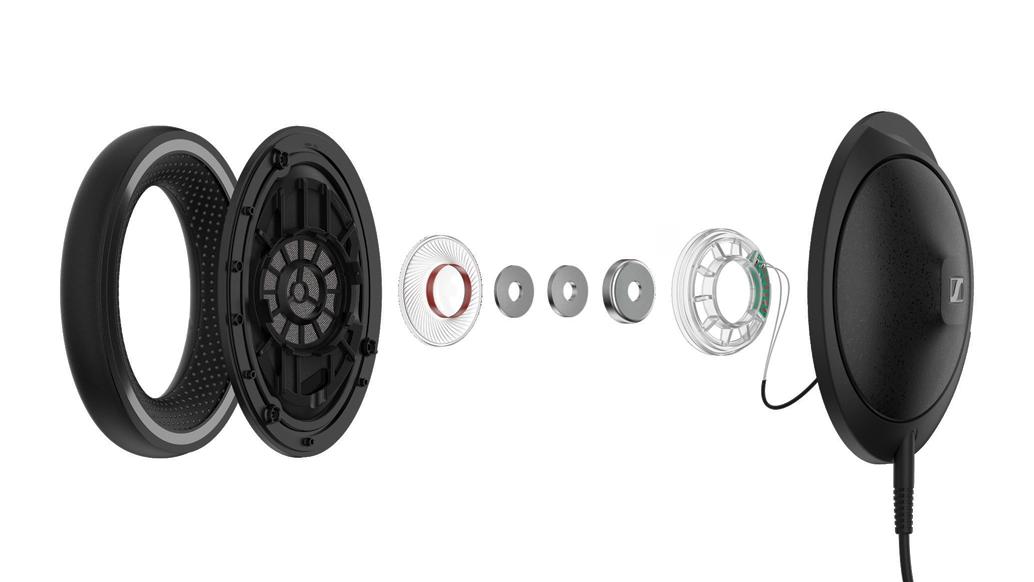
by Gilles Laferrière
DURING MY VISIT TO CHICAGO’S AXPONA 2023, I HAD THE PRIVILEGE OF INTERVIEWING CHAD KASSEM, OWNER AND FOUNDER OF ACOUSTIC SOUNDS, ANALOGUE PRODUCTIONS, QUALITY RECORD PRESSINGS, AND BLUE HEAVEN STUDIOS. CHAD WAS VERY GENEROUS WITH HIS TIME AND SPOKE CANDIDLY ABOUT HIS LIFE, ASPIRATIONS, AND THE NUMEROUS CHALLENGES HE FACED WHILE BUILDING HIS THRIVING ENTERPRISE.
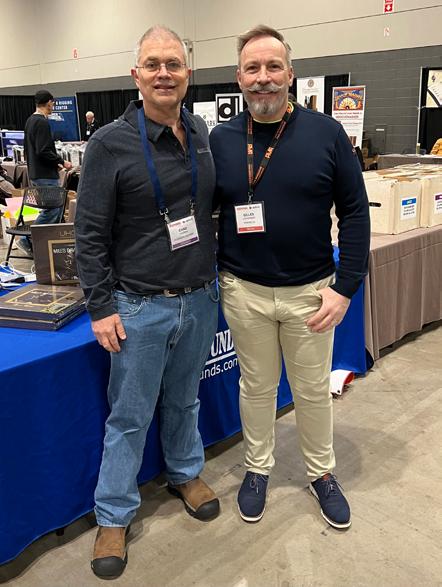
Chad is a significant figure in the audiophile community. His reissues under the Analogue Productions label that I’ve purchased over the past two decades are some of the best-sounding records in my vinyl collection. Chad’s relentless pursuit of the highest quality reproduction of music on vinyl has played a crucial role in the medium’s revival.
“I met Chad early in the morning for our conversation. I began by inquiring about his background, including his origins, teenage years, and how he ended up in Kansas.
“Well, I’m a half Cajun. My mother speaks French, and the family spoke French, and a lot of people in Southwest Louisiana still do because it’s where the Cajuns that came from Nova Scotia ended up. It’s a very unique part of America. The culture is just so diferent. They have their own language, their own
music, their own style of food. And that’s where I was raised. One thing about the Cajuns and people from Louisiana is they like to have fun.”
I told Chad that I’d been to New Orleans so I had an idea of the fun he was talking about.
“New Orleans is a bit diferent than where the Cajuns are,” he said. “The Cajuns are really in Lafayette, west of New Orleans. Now, New Orleans has this. There are a lot of similarities. But if you want to find where the most Cajuns are, go a little further west.
“When I grew up in Lafayette, bars were open 24 hours. You could buy beer at 12-yearsold. Lots of drugs and a lot of festivals. Every weekend there’s a festival: crawfish festival, crab festival, shrimp festival, jazz festival… any excuse to have a party. And the weather is warm, so people don’t really sit at home and listen to records. You can hear live music so often that you don’t stay home.
“[If you’ve only ever lived there], you don’t recognize how unique of a place Lafayette is. You think everywhere is this way. Everybody does this. You have to move away to realize how diferent and how special it is.
“There are so many musicians. The families pass it down. I learned so much about the history of New Orleans music. Rock ’n’ roll pretty much started in 1949 with Fats
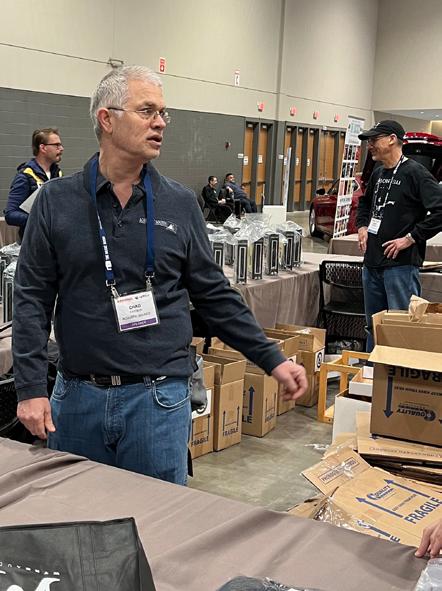
Domino. A lot of people think [it was] Little Richard or Chuck Berry. No, Little Richard [who hailed from Georgia] went to the studio in New Orleans, and it was with New Orleans backup musicians that he made his best hits. I’m not taking away anything from Little Richard. He’s awesome. And he was at the beginning for sure. But I learned all about the blues, zydeco, and jazz, from where I was from.”
Photo 2
Chad paused a moment, then said: “I got in a lot of trouble. [At one point], I had to choose between going to jail or to a halfway house. This was around 1984, so I was about 22 years old. It wasn’t a hard decision to pick a halfway house over jail. The only problem was that the halfway house was in Salina, Kansas, exactly in the middle of America, which couldn’t be more diferent than where I was from. But that’s exactly where I needed to be. A place that doesn’t have a lot of alcohol, where there’s not a lot of misbehaving, where the bar closes, things like this. So, I moved there.
“This is the year that CD was coming out, 1984. I get to Salina, Kansas, and I’m staying sober. I got a job right away. I was working hard, trying to do as good as I could. I wanted to start putting my record collection back together. My dad called me. He said, ‘I’m coming to Kansas, is there anything you want me to bring?’. It’s about an 11-hour drive. I think he’s bringing me a car! I said, ‘Well, bring my stereo and my records.’
“He brought my stereo, my records, which was a lot of my identity, from when I was partying and carrying on. The records had scratches and dust. I started replacing the bad ones.
“After, I went home to Louisiana to visit a friend who was an audiophile. We were both music lovers, but he’s a bit more of an audiophile than me. And he learned so much about how to set up turntables and about tubes and the diferent kinds of brands. And he really went far into it. I went to his house, where he showed me records that said ‘Original Master Recording’ on the top, and some that said ‘Super Disc Nautilus’. And I said, ‘Well, Chet’ — his name is Chet — ‘I have some of
those already. I don’t hear the diference [with regular recordings]. To me, they sound the same. He said, ‘Sit in the middle of the bed right here, I’m going to put one on. Now you got to listen very subtly. It’s not going to slap you in the face. The band is not going to jump out of the speakers and start playing live! It’s subtle. If you listen carefully and you listen to these sorts of things, you’ll hear the diference. But you have to sit in the middle.’ I’m like… okay, whatever… I sit in the middle. I start talking. He said, ‘Chad, listen, you’re never going to hear if you don’t shut your big mouth! All I’m asking is one song! Don’t say nothing and sit in the middle.’ I said, ‘Okay, I’ll give you the song.’ And he played it. I heard the things that it did good. When he told me how rare these recordings were and how much they were going for and how they’re hard to find, it was a lightbulb moment!
“When I get back to Kansas, I go to the record store — we had a nice record store in this little town. And they had a shitload of these out-of-print records. I called my friend and told him, ‘They have the UHQR Dark Side! They have the UHQR Sergeant Pepper! They have Déjà Vu! They have all the Zeppelins!’ He bought a bunch of them. And then I took the rest and started to collect records.
“I went all over America. Every time I was in a big town, I would go to every used record store. They still had new record stores in the malls. CDs were just coming out.”
He squinted, then said: “Do you know how they tried to kill the record? People don’t realize how that really happened. It wasn’t because the CD was better. There were two reasons. First, the record labels blinded people with science. People looked at that silver disc and they thought it just had to be better. It was quiet. There was no ticks and pops. And so, your mind told you it was better because you’re blinded by science. It was such an invention. You could play this little silver disc.”
“It was the future!” I said.
“Yeah, it was the future,” Chad says. “But at that time, I was buying every record I could. So, the whole world was going towards CDs and I’ve been swimming in the oppos-
ite direction since 1984. There were only a few people I can remember that were championing records and Michael Fremer was one of them. There were a few others, but there’s also a lot of Johnny-come-latelies. They’re coming back to the party. And we’ll welcome them back, but they were the first ones I saw running. They’re now telling me. ‘I’ve been supportive!’ Yeah, you can tell somebody else that. They may believe you, but I remember.
“The other reason the CD almost killed of the LP is because, before the CD came out, if you were a mom-and-pop store, you could order all the LPs you wanted and if you had a defective one, you could return it. If you had overstock, you could return it.
“Let’s say a new band came out, a funny name you never heard of. Well, people who owned the stores didn’t know about the newest crazy music, so they were reluctant to buy more than a couple of copies of it. But the record label would say ‘It’s popular and people are going to come in for this record. It’s hot. And if you don’t sell it, you can return it.’
“That’s how the labels got the stores to buy more records, because you need to buy the new artist but you don’t want to lose money. Well, when CDs came out, they said, no return anymore for defective vinyl for any reason. It’s a one-way sale. And we’re going to raise the price of records by a dollar and lower the price of CDs by a dollar. And you can return CDs all you want, for defects and overstock. That’s why you had a record store in ‘84 that was 100% full of records, then 95% full of records and 5% full of CDs, and within

a year and a half it had gone to 95% CDs, 5% records. That’s how that happened so fast.”
Chad’s love for blues music began at a young age. I asked what drew him to this genre, and if it was his favourite.
“Yeah, it kind of is,” he replied. “I love blues. To me, blues is like classical music — it sounds as good today as it did when it was made. It’s the same way with most jazz. And then blues, to me, is the foundation of the music that came after — rock ‘n’ roll, R&B, jazz. I tend to like jazz when there’s blues in it.
“And I like music that sounds good. If it doesn’t sound good, I like it less. I want something that draws me in. [I like] a lot of air and spaces between the notes. If it’s loud and compressed or too busy, it’s not enjoyable to me.
“I like more natural, more acoustic, less dated-sounding music. And blues is one of those styles. I also love classic rock, especially when Zeppelin or Foghat or the Allman Brothers are doing blues. I love the original songs from Muddy Waters and Howlin’ Wolf and the same songs in their rocked-out versions. I love jazz and classical. But again, if the music gets too heavy or too busy…”
“Like free jazz or experimental?”, I suggested.
“Yeah. Some of that I don’t care much for. If it’s too busy, if it’s too loud, if there are no spaces, it’s pointless for me to listen to.
“Growing up in Louisiana, you got jazz coming out of New Orleans. You got the rock ‘n’ roll of Fats Domino and all that. So many hits came out of New Orleans. So much music was influenced by music from Louisiana. There’s a lot of blues, Cajun music, and then there’s zydeco, which is a mixture of R&B and Cajun, where they play the accordion and the rubboard. And they sing in French. A lot of the bands we know will go to France and tour. One of our bands that was famous is Zachary Richard. Have you heard of him?”
“I know him very well,” I said. “He’s very popular in Canada, particularly in Quebec and New Brunswick.”
“Well, he dated my mom,” Chad continued. “His nickname is Ralph. We had all these influences, and a lot of it is blues-based. I also
tried to document the blues. These blues guys are older, and they’re dying.
“There’s two things I tried to do: keep blues alive and keep vinyl alive. These are two big goals of mine and I did what I could. But most of the blues masters are gone. Taj Mahal is still living. So is Charlie Musselwhite, Billy Boy Arnold, Buddy Guy. Buddy is from Louisiana. He’s 86 now.”
In 1984, at age 22, Chad Kassem moved to Salina, Kansas, where he worked as a cook.

He also became obsessed with records.
“Every waking moment, I would just think about records and finding them,” he said. “By ‘86, I started Acoustic Sounds out of my apartment. You couldn’t even move. The whole place was full of records. We had boxes of records in the bathroom!
“So, I’m like, okay, it’s time to move. I bought a house in a suburban neighbourhood. I had five to ten employees working out of my bedrooms, with their cars parked in front of my house. When the 18-wheelers started coming, dropping of pallets, the neighbours started to complain. I needed to move again. In ‘91, I moved into a normal business space. In around 1990, I released my first reissue, and then in ‘94 is when I
recorded my first blues record—by Jimmy Rogers. So, if you look back at someone who worked for a bit more than minimum wage, who used his money to buy a home, release his first album, then record his own record on his own label—we did a lot in a short time.”
What was his first reissue?
“Jules Massenet’s opera Le Cid with Louis Frémaux. I did it through the guy who had the license from EMI. I knew him, but I didn’t know the big dogs at EMI. I approached him, and he said, ‘I can’t relicense something that was licensed to me. But I can make you the quantity that you want and I’ll make it how you want.’ I said: ‘I want you to use Doug Sax and do it at the RTI pressing plant.’ He gave me a finished goods price with the jackets and I took it. That was my first reissue, probably in ’89, ’90. It didn’t have an Analogue Productions catalogue number—it wasn’t on Analogue Productions—but that thing sold like crazy because it’s just a showstopper. The dynamics are unbelievable.”

“My first Analogue Productions release was in 1991—Virgil Thomson, The Plow That Broke the Plains. It’s Classical music. That’s how it started. Everything after was a natural step forward, a progression, me getting closer to controlling the quality and putting out the music I wanted.”
Soon after came those big jazz titles from Blue Note and Fantasy.
“That started in about 2002,” said Chad. “It was a lot of work. Very satisfying. Those records are killer records. Whoever owns
them has got some great-sounding records.”
I asked Chad how he managed to get those titles.
“In 1992, I called Ralph Kafel, president of Fantasy Records. Fantasy owns Fantasy, Contemporary, Pablo, Prestige, Riverside. I told him I wanted to reissue Sonny Rollins’s Way Out West and Bill Evans’s Waltz for Debbie. Those were my first two, released in 1992. Over time, Ralph and me built a good relationship and it’s still going today. Now, I’m helping Fantasy with the Acoustic Sounds Contemporary Series, and then we’re doing 50 Prestige titles on our own label.”
When did he buy his first record press?
“Around 2009-2010,” he said. When I replied that he must’ve had a tough start considering the state of pressing plants in general at the time, Chad took a deep breath, and I could see in his eyes the pain seeping in from his memories.
“It took lots of work, man,” he finally said. “Lots of damn work. Not easy. Hardest thing

I’ve ever done, even if I didn’t do the work— it’s a team of people. I just paid for it all. But it’s hard. People don’t know how hard. They’re just asking when the next record is
coming. They don’t know. And I don’t know why all these people want to open pressing plants. They don’t know what they’re going to find out. You could talk to them till you’re blue in the face on how hard it is. I mean, they believe it’s hard, but they’ll never believe how hard for how little profit.”
I asked Chad about the prospect of replacing the skilled individuals on his team. Given the specialized nature of the technology, was he concerned about finding capable successors as his workforce ages?
“There are a lot of issues, and that certainly is a big one,” he said. “We’re training, but people quit. When I said it’s hard, you can put that in with the hard.
“It really started with COVID,” he continued. “Before that, things were going smooth in the world. Every store knew how many things to order—cups or phones or whatever it was. It was like 30 years of practice in ordering, getting what you needed. Then all hell broke loose. It’s still not back to the way it was and people don’t want to work anymore. That said, I have a great crew. We pretty much have all the jobs filled. It’s just so much more difcult now. COVID caused me problems, caused everybody problems, caused a lot of death. But it also doubled my business overnight.
“Nobody really knew how to handle the COVID situation,” he said. “A bad thing about it was some states didn’t shut down. Our competitors in those states stayed open. It was an unfair situation. Our state made a shut down. We had to shut the pressing plant down. It was a nutty time, but we were able to keep going. At the same time the government is shutting you down, business is rising. We haven’t quite caught up, but we’re getting closer.”
One of Chad’s companies is Quality Record Pressings, the plant where he presses his records. How many records are pressed there annually? “About a million and a half,” he said. “We’re running 24 hours, and we were doing that with two shifts. Now we have three shifts, so hopefully we’ll make more.”
Ultra High Quality Record (UHQR™) vinyl is the high-end product of Analog Productions, the ‘audiophile’ division of Acous-
tic Sounds. UHQR records are made with Clarity Vinyl, originally introduced by JVC Japan in the 1980s. I asked Chad to tell me more about it. “Clarity Vinyl is vinyl in its natural state,” he said. “It comes out that clear. The black is a carbon dye additive just to make the colour. Now what you get from the colour is you can see the grooves better. Before vinyl, there was shellac, and it came from a bug called the shellac beetle. They squeezed the insect to make the resin. That’s where the black colour came from. When the industry went to vinyl, it added carbon dye to get the same colour. It’s like putting an additive in your food. With UHQR vinyl, we keep it natural. We don’t add the additive. The vinyl is pure. That’s the first thing. The other thing is we use ‘flat profile’ 200-gram vinyl.” A record that undergoes the flat-profile process comes out flatter than a typical record. This allows the needle to track the groove better.
“Our goal is to constantly improve,” he said. “Whenever someone buys a record from me, I’m reinvesting money into trying to make our product better, trying to upgrade our machines, trying to license more product.”
I had heard that Acoustic Sounds had recently acquired its own printing facilities. I asked Chad if they were printing their own record jackets.
“No, we do everything from the microphone to the mastering, to the plating, to the pressing, to the sleeving, to the distribution at retail and wholesale. The only thing we don’t do is the jacket. I did buy a printing company that prints the labels, the inserts, all kinds of things. And we could print the jacket, but I decided at some point I got to go to bed at night.”
Chad does a lot of business with RTI, another label that presses its own high-quality records. Aren’t they competitors?
“We don’t consider ourselves competitors,” Chad said. “They help us, and we need more records made than we can make ourselves for our own label. Their quality is high. Don, the owner, is a friend, and I’ve been pressing with him since the ’90s or so. He helps us. We are better together. We’re

stronger together. He’s so busy and I’m so busy. We’re not fighting. I send him so much work.”
Was that part of his philosophy, to form alliances rather than adopt a more confrontational stance against competitors?
“I try to,” Chad said. “But not quite like Don. He helps a lot of other pressing plants. He wants this industry to grow and feels that he needs to share his knowledge, and sometimes I think the people he helps… well, I don’t think if the shoe was on the other foot they would help him. I look at him as kind of, in the record pressing area, my mentor. We were partners at AcousTech Mastering inside of RTI, working with (mastering engineers) Stan Ricker and Kevin Gray.”
After Chad purchased The Mastering Lab in 2015 from the estate of legendary mastering engineer Doug Sax, he relocated it from Ojai, California, to Acoustics Sounds’ headquarters in Salina, Kansas. I asked if all the mastering was now conducted in-house.
“We’re starting to do more,” he said. “I’ve got a mastering engineer working for me—Matt Lutthans. But we still use Bernie Grundman, Ryan K. Smith, Kevin Gray. We choose diferent people for diferent occa-
sions. But they’re all the top. If I go to one over the other, it’s because I think they may have an edge for that project. I’m always thinking about making the highest quality. I don’t just use one mastering engineer. I did when Doug Sax was living. I used him for my first 40 records.”
The new & fnal part of the interview starts here.
Chad mentioned how he always strives to deliver the best product he can. Did negative criticism on social media bother him?
“It’s hard to take,” he said. “Because a lot of times the people who complain don’t know what they’re talking about. And if they knew, they wouldn’t say it. I don’t want to write them a letter that takes 3 hours to explain why they’re being unrealistic. Now, I have to remember that 99 out of 100 people are saying they love what I do. This is happening more and more when I’m at the booth, like here at AXPONA. People tell me, ‘Chad, thank you for making my life more pleasurable. You bring me a lot of joy. You’re making my favourite records sound better than they ever have. We really appreciate what you do, and we love your company’.
“I need to remember that when I read the negative stuf,” he said. “I could have 99 positive comments and that one bad one hurts. I’ll forget about the other 99. Somebody needs to tell me, ‘Chad, what are you talking about? Look at all the good comments.’ I also know that most of my happy customers are just listening to their records and loving it. They’re not commenting. But sometimes somebody gets a bad record and you’d swear that I burned their house down. We replace the record or give the money back. What else can I do? At that point, you really have to let it go.
“On the other hand,” he continued, “can I expect that everybody’s going to love what we do or love me? That’s unrealistic, too. I’ve got to be realistic, and I’ve got to remember, just like when I have a problem employee, that while I’m focused on him I got 99 others that are great. But I’m human, and I just have to deal with the negative the best way I know how. But it is frustrating, and sometimes we do have problems. Not every record is perfect. And sometimes a record is returned and you’re, like, ‘why do you say it’s warped? Does it sound warped?’ It doesn’t, but some people expect perfection, and we’re trying.”
I asked Chad about the tumultuous episode in early 2023 when, unable to handle the demand of Analogue Productions’ freshly-released UHQR edition of Bob Marley’s Exodus, limited to 2500 copies, his company’s computer system essentially broke down, creating havoc with orders. The back-

lash, especially on social media, was swift and relentless, lasting for weeks.
“They were so mad,” Chad said with a heavy sigh. “I could see how it’s frustrating, but we had ten people answering the phones for two days. It was like United Airlines! We were blindsided by the demand and then we sold a few too many copies because our computer didn’t know when to stop. The next morning, we were 100 or so orders over. We always make a few extra copies for the defective replacements, so we emailed people and said we had extra copies we could send them, but they wouldn’t be numbered. Well, 99 out of the 100 people were very happy about it. But then it was something new: ‘How many more did they make?’, ‘Is this really a limited edition?’ It was very frustrating.
“We apologize,” he continued, as if addressing customers directly. “Our website is old. We’re spending a huge amount of money to go from a 25-year-old system to a new one. To take all the information and put it on the new system took three years. Our servers are in house, our programmers are in house, and people can criticize a lot of things about our website, but we invented it. For example, if you pull up ‘Beatles’, you can narrow your search to Vinyl, or Box Set, or a particular label, or to preowned, and so on. You can really refine your search. We did all that because we’re record collectors. We’re now going to go like everybody else. We’re going to be in the cloud, and we’re going to be on a local server, but a very expensive local server.”
I pointed out to Chad that when he started his business, the Internet didn’t exist.
“Right. In 1986, I did a crazy little ad in the back of audio magazines, in the classified part. You can find them in Stereophile and The Absolute Sound. People would call. I’d be in my underwear taking orders and I’d box the record to ship. Customers would send me a money order.
“It takes a long time to pay your dues,” he continued. “We’re getting a lot of love and a lot of appreciation right now, but it took a long time to get there. It takes a long time to prove to the labels that you’re going to do what you say, and that they can trust you and work with you. It doesn’t happen over-
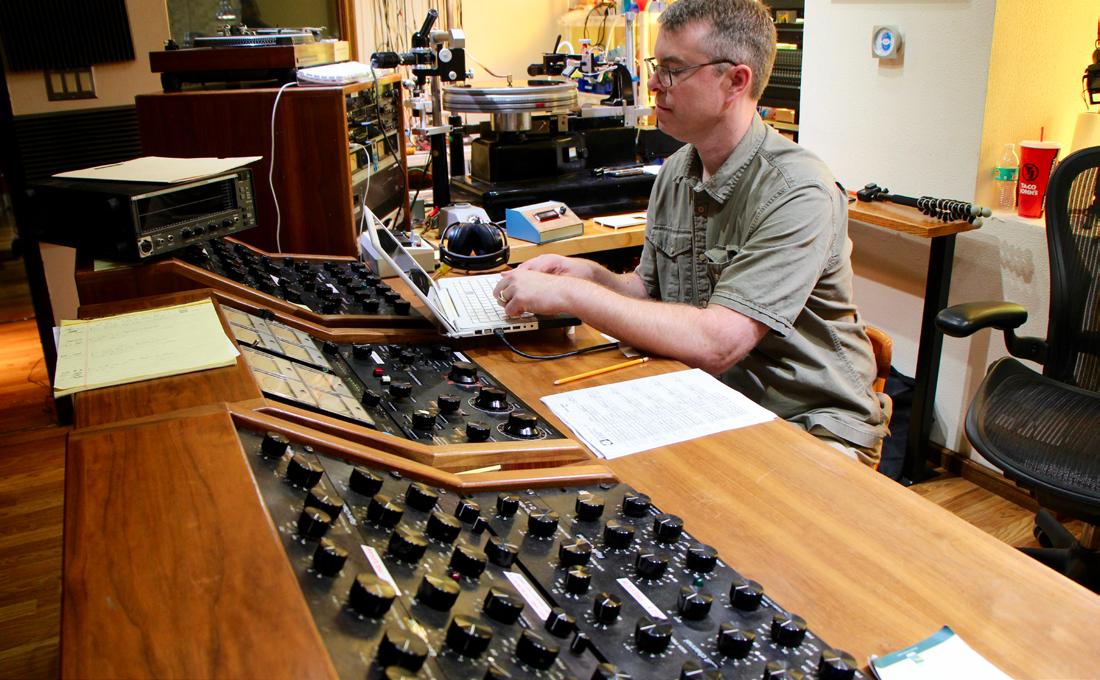
night that the labels will just hand over the masters to all the best records that have ever been made.
“I like going through the old days, the old catalogues,” he said. “It’s one step at a time. Just always trying to improve things as we go—the quality, the service, our boxes, our shipping, getting people the titles they want.”
I asked about the competitors in his industry.
“There are three competitors right here,” he said, referring to AXPONA’s Expo Hall & Record Fair, where we sat. “That one, the owner, is in Bahamas. This one is in Hawaii. It’s hard to know who’s behind what exactly, or why they’re doing it or if they love it. I’m not putting them down. I’m happy for them
and they’re lucky. But there’s a face on my label. With me you know who you’re dealing with.”
How important was it to him that his records sound better than previous releases by other labels?
“I use two identical turntables and a mastering console to compare our record to someone else’s. I’ve been doing more and more of that and I’m learning so much about all the labels and the originals and how ours compare. My goal is to win, not assume my record is better. That’s why I recut the Steely Dan record, the first one, seven times. I’m going to make sure ours is better.”
Did he still listen to music at home, just for fun?


“Not as much. If you have a normal job, you go home and listen to music to get away. But when you have a job like mine, you listen all day, so you go home and you don’t want to listen anymore. But I have a really good stereo there and I use it sometimes to hear another perspective on what I’m working on. Sometimes I listen for enjoyment, but usually when I go home, I’ll just turn on the TV and eat.”
Last question: In his achievements in business and personal life, what was he most proud of?
“Well, I have a 16-year-old little girl and I’m very lucky. She’s so much more mature than me. If I talk to her about an argument I had with her mama, she’ll be like: ‘Dad, listen, you need to seek some professional help. Don’t talk to me about this.’ She says it in a real nice way and she’s not gonna take a side, she’s right down the middle.
“She plays classical piano and jazz piano,” he continued. “And we don’t have to tell her to study. She is so intense about her grades. We
got invited to an all expense first class Hawaii trip. Private jet thing, the whole wow. But she didn’t want to miss school, so she stayed. She’s so much diferent than me. I barely graduated. I could give a shit about school. I hated it. She loves it. I’m proud of her. I can’t really take credit for it. A lot of it was luck.
“I say luck is when preparedness meets opportunity and you are ready,” Chad said. “Like, with our sales boom during the pandemic—we were ready. We worked 30 years building up to it. I didn’t realize it was coming, but if I look back, it’s like everything I did brought us there. I invested every dollar I had, every waking moment I had. I was preparing for that moment. The advice I would give to anybody is to try to make your hobby your line of work and then you’ll never work another day in your life. That’s one thing I’m proud of. If you work hard, good things will happen. Everybody should work hard to try to make things better. Try to make a diference. Try to make something better for the world, and make something better for you.”
by Jonson Lee

SOUND QUALITY IS AN IMPORTANT PART OF THE MUSIC LISTENING EXPERIENCE. A GREAT EXAMPLE OF THIS, IN MY OPINION, IS THE UNDERAPPRECIATION OF ORCHESTRAL MUSIC. I FIRMLY BELIEVE THE REASON A LOT OF PEOPLE CAN’T GET INTO THIS TIMELESS GENRE IS DUE TO THE HORRIBLE SOUND QUALITY THEY’VE HEARD IT IN. THEY MAY ACTUALLY LIKE IT ON A SYSTEM THAT REVEALS MORE OF THE INTRICACIES AND MELODIES IN THE COMPOSITIONS. SIMPLY PUT, BETTER SOUND QUALITY ALLOWS ONE TO HEAR MORE MUSIC AND LESS MURKY GARBAGE. THIS MEANS THAT THE MORE COMPLEX THE MUSICAL ARRANGEMENTS—THE MORE THAT’S GOING ON IN THIS MUSIC—THE MORE THE LISTENER WILL BENEFIT FROM HEARING THE MUSIC PLAYED THROUGH BETTER—MORE REVEALING— SOUND, WHICH WILL MAKE BETTER SENSE OF IT THAN BAD SOUND WILL.
But while sound quality is an important aspect of the music-listening experience, it’s not the only aspect. Good sound quality does not necessarily equal listening experience quality. As important as good sound is, it’s still just one of the determining factors of how good the overall listening experience will be. Believing they are the same thing and behaving accordingly is a trap many audiophiles set for themselves, because they see good sound as a panacea to all that ails their listening experiences, a belief that can foment a constant urge to upgrade. This is not an efective approach to the ultimate goal of this hobby, which is to improve our listening experiences. It is unbalanced, and ultimately inefective, because it doesn’t look at the bigger picture.
It’s like audiophiles who obsess with the choice of speakers, but not much else. I’ve heard systems where 90% of the system budget went into buying expensive speakers, only to have them incorrectly placed and connected to inadequate gear that made them underperform. Such a lopsided system never sounds as good as one with more modestly-priced speakers carefully placed and installed, driven by quality electronics. Our hobby, as in life in general, is about achieving balance between the diferent elements that influence the whole. In other words, our hobby is based on the premise that the whole is greater than the sum of its parts, which implies that all the parts should be in sync and work well together to achieve our goal.
So what elements afect the quality of the
overall listening experience? Aside from the gear, there’s the room, and, well, us. The principles of balance don’t apply just to external forces, but to us, the participants in the listening experience. That means that, to achieve an optimal listening experience, we should pay attention to aspects of our life that invariably carry over into our listening sessions. One of them, for example, is our physical well-being.
Remember the adage that if you don’t have your health, you don’t have anything? Well, that applies to audio, too, when our appreciation of what we listen to rests on our ability to enjoy it without disruption, including from our own selves.
Case in point: I have an audio system, built over many years of trial and error, that, to my ears, sounds nothing short of amazing. It contributes to the quality of my listening experience and the quality of my life.

But when I had a serious lower back issue two months ago, my enjoyment of music nose-dived, despite my system’s marvelous sound quality. The pain and discomfort prevented me from appreciating it. It turned out that the solidity of my system’s bass or soundstage could not compensate for the lack of solidity in my lower back. As the pain subsided, my enjoyment of listening to my system went up.
Other factors afecting the music listening experience? You name it: mental health, the status of our relationships, our financial (in)stability, our tiredness, our job, and, in my personal experience, the diversity of my other activities. I’ve found that engaging in other hobbies or leisure activities, such as reading books (not just audio reviews and forum posts), doing exercise, spending time with friends, etc., enhances my musical listening experience. How? By instilling a sense of balance and order to my life, which seems to produce the universal efect of making everything better.
Some leisure activities directly afect my music listening experiences. Meditation has trained me to better appreciate the moment— the here and now—so that I can better focus on the music. Exercising has given me strength, stamina, and less aches and pains. If you, like me, sometimes spend too much time sitting in a chair in front of a screen, then watch your back. It’s hard to enjoy listening to music to its fullest when your brain is being hit by pain spasms. In such cases, stretching exercises can improve your listening experiences!
Other activities that can enhance the music listening experience can be more oneof type things that elicit a powerful, temporary efect on our music listening experience, like when I surprised my wife with a bouquet of flowers. Her reaction supercharged my mood and improved my listening experiences for a week after that.
When it comes to our overall music listening experience, having great sound is great. But having a balanced approach is everything.




by Robert Schryer
IN LESS THAN 10 YEARS, THOMAS TAN BECAME AN AUDIOPHILE, LAUNCHED A SUCCESSFUL AUDIO-RELATED YOUTUBE CHANNEL, ESTABLISHED HIS OWN AUDIO BRAND, AND CREATES VIDEO CONTENT FOR SEMINAL AUDIO MAGAZINE THE ABSOLUTE SOUND (TAS). AS THOMAS EXPLAINED HIS RELATIONSHIP WITH AUDIO TO ME: “I HAVE THAT PROBLEM—WHEN I BECOME OBSESSED WITH SOMETHING, I’M OBSESSED.“
That life-changing obsession was sparked when he heard a $300,000 system belonging to someone who is now a friend. “It opened my eyes to what stereo could be,” he said to me during our interview at the house of one of his colleagues, electrical engineer Fabien Tremblay, who was there with us at the dining table. “Before that my music listening was limited mostly to the radio.”
It prompted him to get his own stereo, although not one costing in the six figures. “I said to myself, ‘let’s go with the law of diminishing returns, so I started with a $3000 system. I said all I need are good speakers and a cheap amp. But then I started experimenting. I collected a lot of gear.”
It became a full-fledged audio journey of trial and error and discovery, one he decided to share with others.
“I thought, ‘why not do a YouTube channel?’ At the time when I did it, in 2017, audio YouTube channels weren’t popular. But I wanted to bring everybody with me on my journey.”
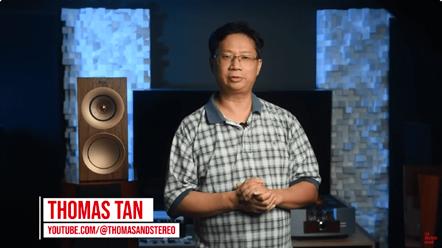
That journey has so far garnered him over 80,000 YouTube followers who tune in to hear him talk about various gear, but also to catch his show reports. His AXPONA 2023 report got 40,000 views, his Montreal Audiofest 2022 one, 100,000 views. These numbers caught the attention of TAS, who reached out to Thomas to ask if he’d like to do videos for the magazine’s own YouTube channel. Thomas agreed, and his first video for TAS, a review of the KEF R3 Meta speakers, has so far amassed 79,000 views, the majority of which came from the US, then Canada, and about 10% from the rest of the world.
“I got an order today from Australia for one of my amplifiers,” Thomas said.
Which brings me to the next chapter in
Thomas’s audio journey: his manufacturing company Galion Audio, which he founded in 2020. The company manufacturers and sells an assortment of gear, including tube and solid state designs, and cables. One of the interesting things about his business model is how it’s built on relationships Thomas establishes with engineers whose previous work impressed him—whose sound, as Thomas put it, made him go ‘whoa’ with delight.
The first such relationship was with company Doge’s Mr. Liu, who had sent Thomas, who’s based in Canada, one of his tube amplifiers from China. That a designer from so far away would do such a thing is not uncommon, apparently. “Because I have a YouTube channel,” Thomas said. “I have designers from around the world sending me stuf.” His relationship with Mr. Liu was the pivot point that led to the creation of Galion Audio, and paved the way to other partnerships, in which Galion Audio, fully owned by Thomas, would hire designers in a thirdparty capacity to build its products.
Another one of those engineers was the man sitting at the table with us, Fabien, designer of Galion’s solid state series of amplifiers, of which a prototype of his TS A20 class-A amplifier sat on the table between us.
Thomas calls Fabien “one of the geniuses out there… that we never hear about.” After pursuing his interest in electronics in univer-
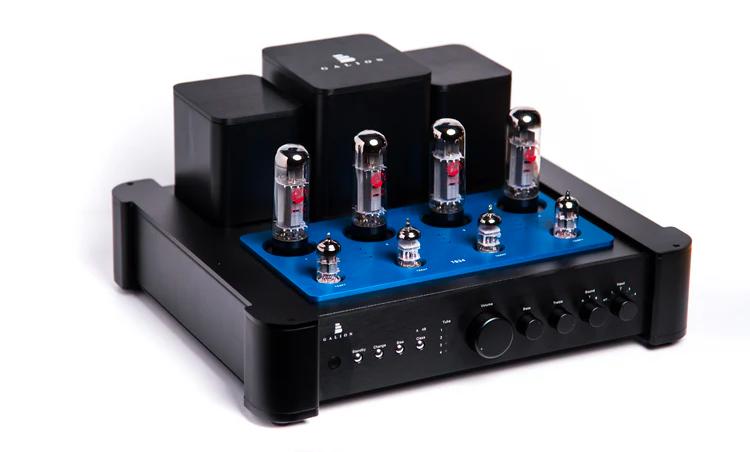
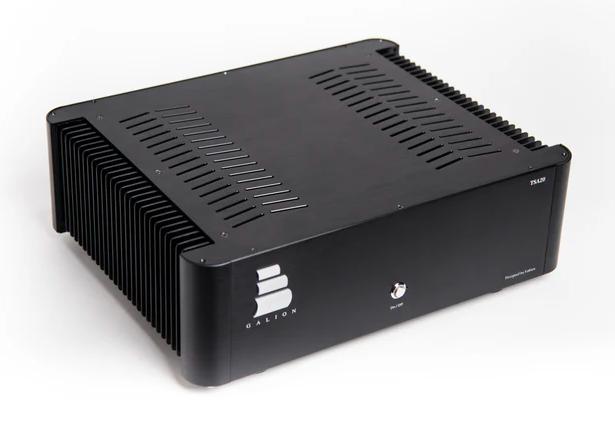
sity, where he built his own graphic equalizer and a harmonic distortion analyzer, Fabien began building his own amplifiers, complex ones with complex circuitry, under the false assumption, Fabien said, they would sound better than simpler designs. He later realized, as he explained it, “that it’s easier to determine what the efects will be of a modification to a circuit when it’s simpler than when it’s so complicated it’s hard to know exactly how your modification may have afected the various parts of the circuit.”
Thomas explained how he and Fabien met: “People from everywhere invite me to listen to their systems. One of those systems was a DIY one. When I heard it, I thought, ‘holy cow, this is in the top three systems I’ve heard in my life’. And I’ve listened to million-dollar systems.
“And the preamp in that system was designed by him.”—He points at Fabien—”That’s when I went, ‘what the hell?’. For Fab, this was just a hobby. I reached out to him and said, ‘hey, do you want to do something?’. That’s where it started.”
The relationship has been going so well that Thomas and Fabien have plans to roll out several other products. The same applies with Thomas and Mr. Liu.
“What I realized over time is there are a lot of good engineers but they don’t know how to market [their products],” said Thomas. “So I propose to them, ‘okay, you build this
for me, and I’ll market it’. That’s my advantage as a YouTuber. My only specific request is that I voice the product, meaning I tell the engineer [where to change the product’s] sound.” Thomas is akin to the chef in the kitchen who tastes the dish and decides if it needs a splash more of this or a dab more of that. Only once he’s convinced there are no more adjustments to be made does he allow the end product to be served to the consumer.
In Mr. Liu’s case, that necessitated Thomas going to China to oversee his products’ development. As for Fabien and, specifically, the TS A20 amp in front of me. “I’ve been here 200 times to voice that amp,” Thomas said with a chuckle, to which Fabien rejoined with, “Sometimes I have to revert to the previous modification, or even the one at the beginning, or…”—he moves his hand back-andforth to simulate manic repetition.
“And you’re still friends”, I said with mock surprise, eliciting some slightly nervous laughter from both.
Every Galion product is credited to the designer, whose name is imprinted on the chassis’s front or back panel. Fabien’s signature appears on the front of his creations, including on the made-in-Canada TS A20, while Mr Liu’s signature appears, in Chinese characters, on the back.
I heard both the made-in-Canada class-A TS A20 ($3750) and class-A or A/B (the amp is switchable between both configurations) TS 34 ($2950) in my own system, and liked very much what I heard—the TS A20 has that expressiveness and gush-like musical flow of a well-oiled class-A design, while the TS 34 in class-A mode sounded über-transparent, rich with detail, with a soundstage that traversed several levels of depth. The TS A20 comes with a 2-year guarantee, the TS 34, a 1-year guarantee.
“As long as the product is a ‘whoa’ prod-
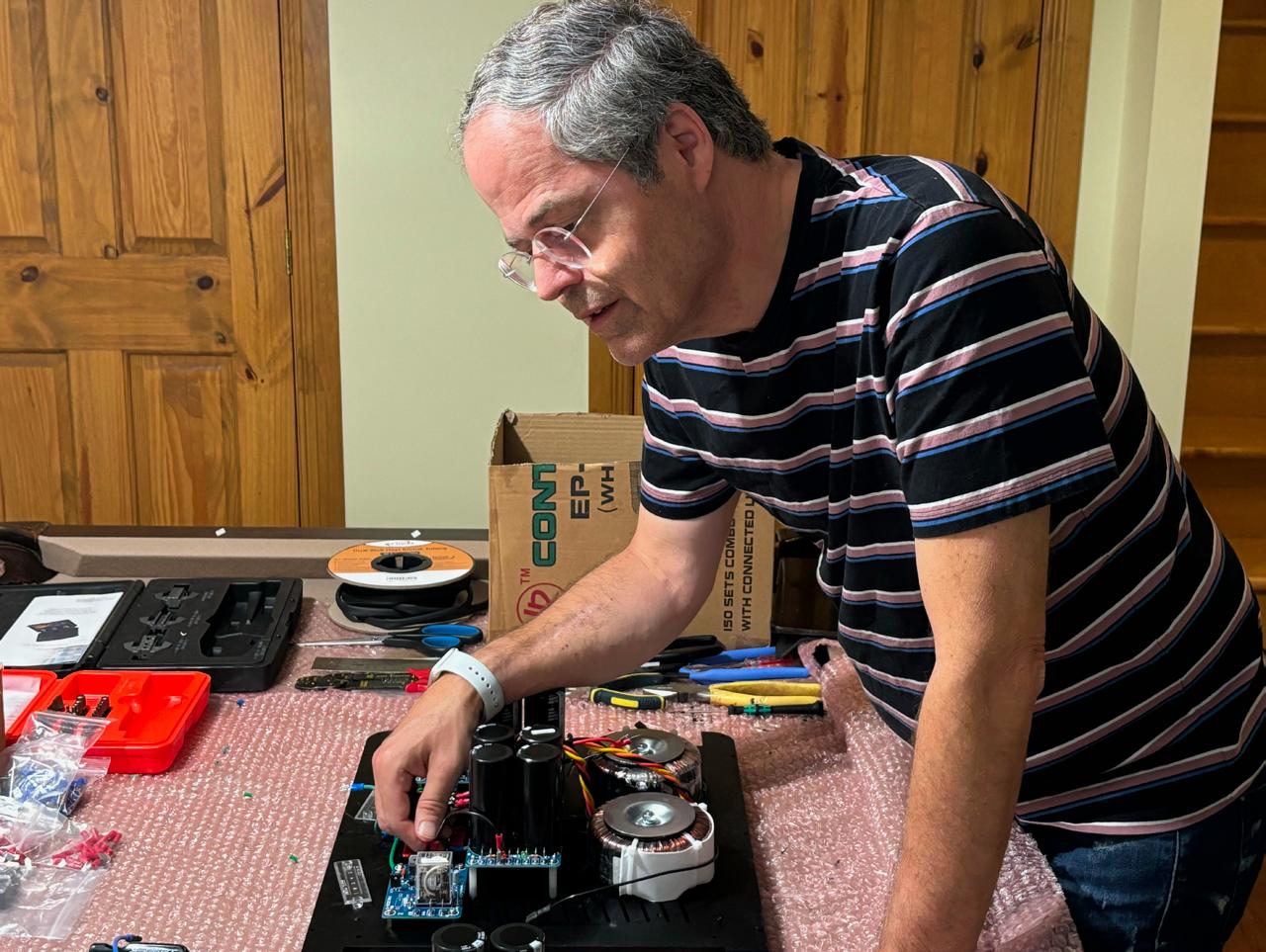
uct,” Thomas said. “I’ll bring it to market. People put their trust in me and I don’t want to let them down.” Thomas’s name, after all, is on the line. This is no mass-production affair—we’re very far from Marantz or Simaudio territory. But what Galion may lack in resources and longevity compared to some companies, it strives to make up for by offering great-sounding products that sell for less than competitors’ similarly-performing ones. To keep costs down, Galion sells direct and keeps profit margins low, a recipe Thomas hopes will initiate more people into a hobby that, as in his case, was life-changing.
In the course of my conversation with Thomas, it became clear to me that he’s on this audio path for the right reasons—out of passion for audio and a desire to make Galion an enduring source of ‘whoa’-sounding products designed to impress, well,
everyone, of course, but mostly those YouTube friends who’ve decided to join him on his audio journey.
To quote a part of his About blurb on his Thomas and Stereo channel, “I designed this channel to give you the feeling of chatting with an old friend. I am fortunate to have made many audiophile friends on my audio journey.” In a sign of the times, his blurb ends with, “Please note that by sending in your product, you agree to not pursue any legal action for negative feedback”.
By all accounts, Thomas’s audio obsession is a noble one. He loves audio and wants to share his passion with others. If what he’s accomplished so far in his “obsession” with audio is any predictor of what’s to come, I, for one, very much look forward to the next chapter in Thomas’s audio journey.
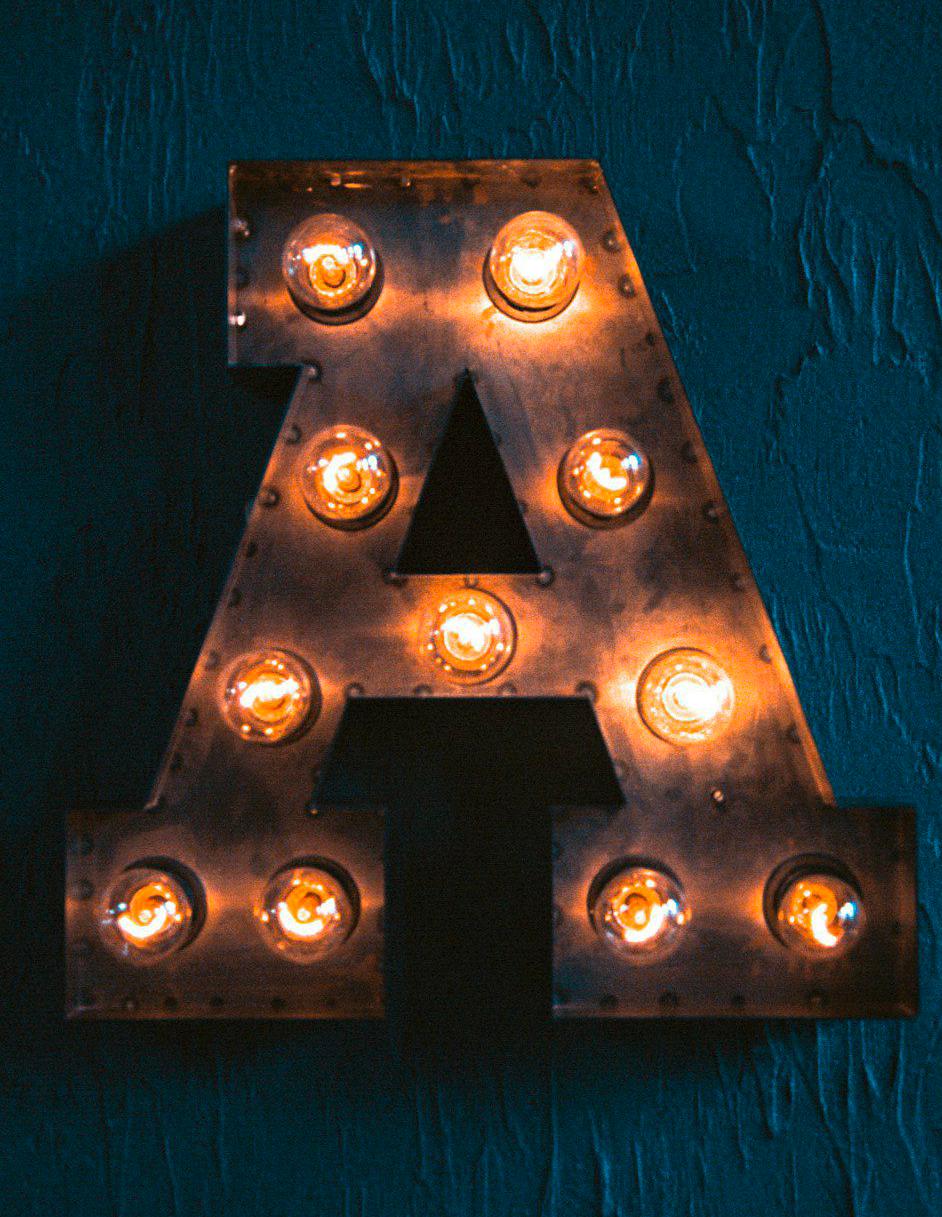
by Robert Schryer
CLASS-A AMPLIFIER DESIGN IS STAGNATING—THAT’S WHAT CLASS-D PIONEER BRUNO PUTZEYS CONTENDED IN MY EARLIER DISCUSSIONS WITH HIM ABOUT CLASS-D. TO RE-QUOTE HIM: “CLASS-D AMPLIFIERS WILL CONTINUE IMPROVING GRADUALLY, NOT BECAUSE THEY HAVE TO CATCH UP WITH CLASS-A (THAT TIME IS PAST)…”
“It’s not that difcult to build a respectable class-A amplifier using nothing but a few well-worn rules of thumb. The result was that while class-D crept steadily forward, class-A pretty much stagnated.”
He added: “This has caused a curious paradigm reversal; the question is no longer whether class-D is approaching the quality of class-A, but how many class-A amplifiers can really claim to be up there with the best of class-D? Make no mistake, the fundamental fact still holds: any given level of performance is much easier to achieve in class-A than in class-D. But designers of class-A amplifiers have, by and large, sat on their laurels. I could easily design a better class-A amplifier, but I see no one waiting for a better petrol engine.”
And then there was the issue of price: “Current top-end class-D modules are now so good that in any sound system, irrespective of cost, any other link in the chain is much weaker,” said Bruno. “Even if future modules get better, the improvements are minuscule when compared to the impact of, say, the speaker. That’s also true of great class-A amps like the Boulder 2150. But why
Yes, a class-D amplifier is generally cheaper to make or buy than its class-A or classA/B counterpart. But the audiophile pursuit has always been more about the constant search for better sound than about afordability, and class-A amplification is, arguably, the most revered amplification class of them all for its distortion-free purity of sound, a by-product of the topology’s output transistors always running at full power rather than switching on and of at more restrained power like those in a class-A/B or class-D design.
But was Bruno’s assertion true, that class-A had reached a prolonged period of stagnation where designers seemed to be mostly coasting on the same ol’ technology rather than coming up with new ideas to advance it and, accordingly, keep it relevant? And was this prevailing complacency in class-A design causing class-A’s standing among amplifier classes to become increasingly more tenuous next to those of class-D and class-AB designs?
Of course, as someone who’s got skin in the class-D game, Bruno could be accused of being partial in his remarks about to class-A, but it’s not like Bruno is acting coy here. An-

bother if a class-D amplifier that’s a fraction of the price and size will do just as fine?”
other thing that may be telling is that Bruno’s digs, in our interviews, were aimed at class-A, not class A/B. If anything, Bruno seemed to be throwing down the gauntlet at
class-A’s feet, almost daring its designers to tell him he was wrong. He had made a bold, sweeping claim, which would surely be met with rebukes from class-A representatives taking a stand for their cause, right? Crickets.
Hoping to stir up a dialogue about classA’s place in the audio hobby, I sent an email to a few prominent class-A designers and manufacturers you likely know (if you own a class-A amp, it was likely made by them). It began with me introducing myself, then asking if, as a designer or manufacturer of class-A amplification, they would like to respond to Bruno’s comments, which I’d copied in my email.
I also asked if they’d like to shed light on where they believed class-A technology was headed.
Finally, I asked: “If you believe that class-A sounds better than class-D, could you explain in which ways?”
I expected a handful of eager replies from people wanting to set the record straight or extoll class-A’s virtues, as I did from the class-D contingent for my class-D articles. But again, crickets.
This is not to suggest that the class-A people I sent an email to didn’t respond because they’re hiding something or agree with Bruno. They certainly didn’t have to respond, and it could be that my emails ended up in junk folders. It’s just that the silence that followed my mailing left me with a nagging feeling that there was something being left unsaid.
The one sentence that Bruno told me that lingered longest in my mind was: “Any given level of performance is much easier to achieve in class-A than in class-D. But designers of class-A amplifiers have, by and large, sat on their laurels.”
If that’s true, that could be a concern for those rooting for class-A. As Bel Canto’s John Stronczer pointed out in my article Is Class-D Technology About As Good As It’ll Ever Get?: “Technology is never static or else it dies.”
Is class-A a has-been technology? All I know for sure is what I heard from class-A amplifier manufacturers after Bruno threw
down the gauntlet: crickets.
I would love to hear from those manufacturers, who have chosen to work with class-A over the other classes for some reason, to help set the record straight and continue this discussion.
A day before this article was scheduled to be published, I was delighted to receive a reply from one of the class-A designers I sent that first email to—Nelson Pass of Pass Labs and First Watt. I hope it’s a harbinger of others to come:
Hi Robert,
My longtime business partner Joe Sammut used to say, “It’s entertainment, not dialysis”. The audio industry is full of diverse tastes, and building what we ourselves like, we find that a percentage of the audiophile population picks our equipment and lives happily with it.
I respect Bruno’s eforts at improving the technology of class-D—I explored it years earlier, and got a good commentary from (Stereophile founder) Gordon Holt, but in the end it did not appeal to me, so I continued pursuing simple class-A circuits.
I do have a picture for you though…. best, np

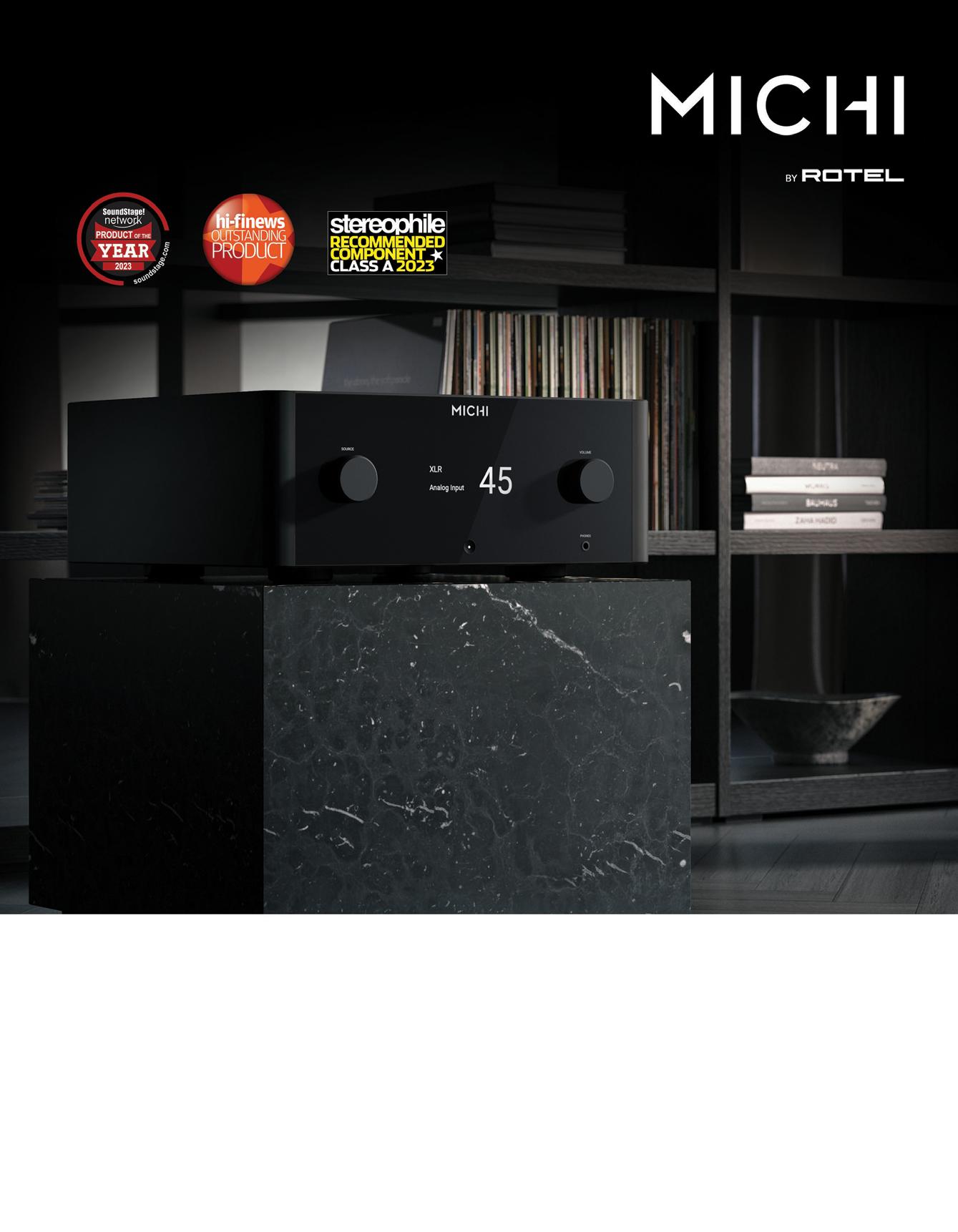

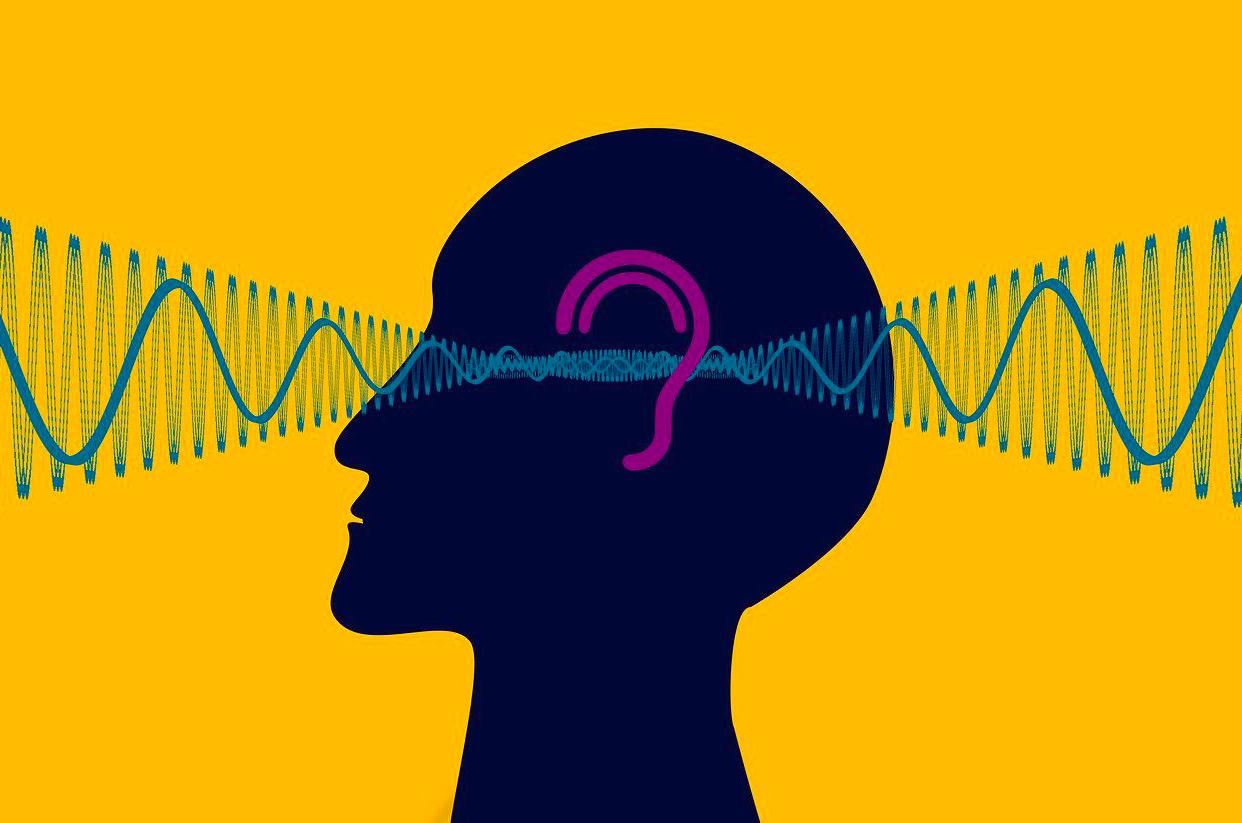
by Kevin Fielding
By understanding how your ears detect the direction of high- and low-pitched sounds, you can optimize your speaker and subwoofer placement and acoustic treatments for the best imaging and soundstage.
Lateral (side-to-side) sound positioning for imaging and soundstage width are related concepts but the former addresses the specific placement of an instrument or singer on the horizontal plane between and outside the front main speakers while the latter refers to overall breadth of the farthest left and right sounds.
Our ears have a fascinating way of determining the lateral direction of sounds based on their frequency, and the size of your head plays a role in this process.
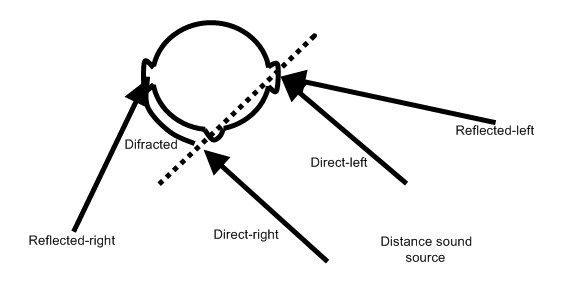
From the Wikipedia Interaural Time Difference page:
The average head width afects how we detect sounds coming from the left or right sides due to the time delay between the sounds that reach each ear. An average head width of about 22-23 cm equates to about a 1,500Hz sound wave.
Regarding low frequencies (below about 1,500Hz), the sound waves are longer than the width of your head, resulting in your brain using the diference in time between when the sound hits each ear to figure out where it’s coming from. This is known as phase detection or “Interaural Time Delay” (ITD). Regarding
high frequencies (above 1,500Hz), the sound waves are shorter than your head’s width, resulting in your brain relying on the diference in volume (i.e. loudness) perceived by each ear to determine the sound’s lateral direction. This is called “Interaural Level Diference” (ILD). There’s a transition zone between 800Hz and 1,500Hz where phase detection becomes less reliable and volume diferences take over as the primary cue. Once the frequency drops below 80Hz, it becomes difcult for your ears to detect the sound’s lateral direction because the phase diferences are too subtle.
If high-frequency sounds are primarily detected by the diferences in volume heard by both ears, then placing your speakers’ tweeters and midrange drivers symmetrically in your listening room becomes crucial. First reflections (when the speaker’s sound hits only one room surface before reaching your ears) will be a little less loud than direct sounds (from speaker to ear) because sound reflections lose some of their energy after striking a surface and traveling a longer distance to your ears. Despite some attenuation and slight time delay, first reflections have a big impact on sound quality as they mix with the direct sound. First reflection timbres will also be influenced by the materials used in the room’s construction.
For example, if one sidewall is a brick fireplace while the opposite sidewall is constructed from drywall, there will likely be an audible timbral diference produced by the first reflection and the reflections of that reflection. Imaging and the soundstage will be pulled towards the louder first reflection surface.
Now imagine a music listener’s room with a hard left-side wall (e.g. drywall), while the right side of the room is open to an adjoining room. In this situation, music from the left speaker will likely sound a bit louder than the right one due to stronger left sidewall reflections from both speakers. The ears detect the louder high frequency reflections from the left sidewall and localize it accordingly. In our example, an imbalance in lateral sidewall reflections will skew the soundstage width leftwards and deteriorate the imaging as if

FIGURE 2. THE HUMAN HEAD’S AVERAGE WIDTH (EAR-TO-EAR) APPROXIMATES THE WAVELENGTH OF A 1,500HZ SOUND WAVE. FREQUENCIES ABOVE 1,500HZ ARE DETECTED LATERALLY BASED ON LOUDNESS, WHILE LOWER FREQUENCIES RELY ON PHASE DIFFERENCES BETWEEN THE EARS.
the singer was placed leftwards rather than centred between the speakers. To correct this imbalance, several tactics can be tried: (1) toeing in the left speaker more toward the listener, (2) using a thick (minimum 6”-thick) absorption panel on the left sidewall to mimic the acoustic properties of the open right side, (3) lowering the left speaker’s volume slightly using a balance control or digital signal processing (DSP), or, (4) setting up a temporary and movable wall on the right side first-reflection point to balance out the reflections. If your left wall is a large window, then it acts as a bass trap, in which case heavy curtains can be used as high-frequency absorbers to help restore symmetry.
Since our ears are more sensitive to lateral diferences than to sounds coming from above or below, you might get more of an impact by focusing on sidewall symmetry before treating the ceiling.
In my listening room, I once noticed the vocals on a favourite song sounding skewed slightly to the right instead of being dead centre. After doing a frequency sweep and analyzing the reflections, I discovered that there was a strong reflection coming from the left speaker. This strong reflection was coming from the right sidewall, so by adjusting the angle of a reflective board on the right wall, I redirected the sound so it didn’t bounce directly to my listening position, but went past my head. After remeasuring and re-listening to the song, the issue dis-
appeared, and the vocals returned to the centre.
To the extent that your subwoofer produces sounds higher than 80Hz, lateral detection of its output relies on the time and phase differences between the sound waves hitting each ear. If you’re using just one subwoofer, placing it in the middle of the room, either between the speakers or behind your seating area, usually provides consistent lateral sound across the room.
If you’re using two subwoofers in a rectangular room, they should generally be placed along the sidewalls to minimize phase and time diferences, ensuring consistent lateral sound detection. However, in asymmetrical rooms, your subwoofers may end up in very diferent room locations to get the best frequency response from each. In this situation, it’s crucial to time-align them to each other and to the main speakers, and to match the subwoofers’ volume levels to avoid any lateral imaging issues.
In my room, I initially had one subwoofer closer to my listening position than the other and visitors could detect the closer subwoofer despite my best eforts to time-align them and match their volumes. Was the detection due to an ITD issue or something else? I can only surmise that the closer subwoofer’s sound waves were stronger, which made them more noticeable. After moving the left subwoofer backward to match the distance of the right subwoofer to my seat, and rerunning the time alignment, the issue disappeared.
Asymmetrical rooms can create unbalanced reflections that negatively impact stereo imaging and lateral sound detection. By aiming for symmetry in your stereo setup, you help ensure that your ears receive sound evenly from both sides. When you achieve this balance, the soundstage and imaging lock in, making your music sound more natural, dimensional, and, ultimately, enjoyable.
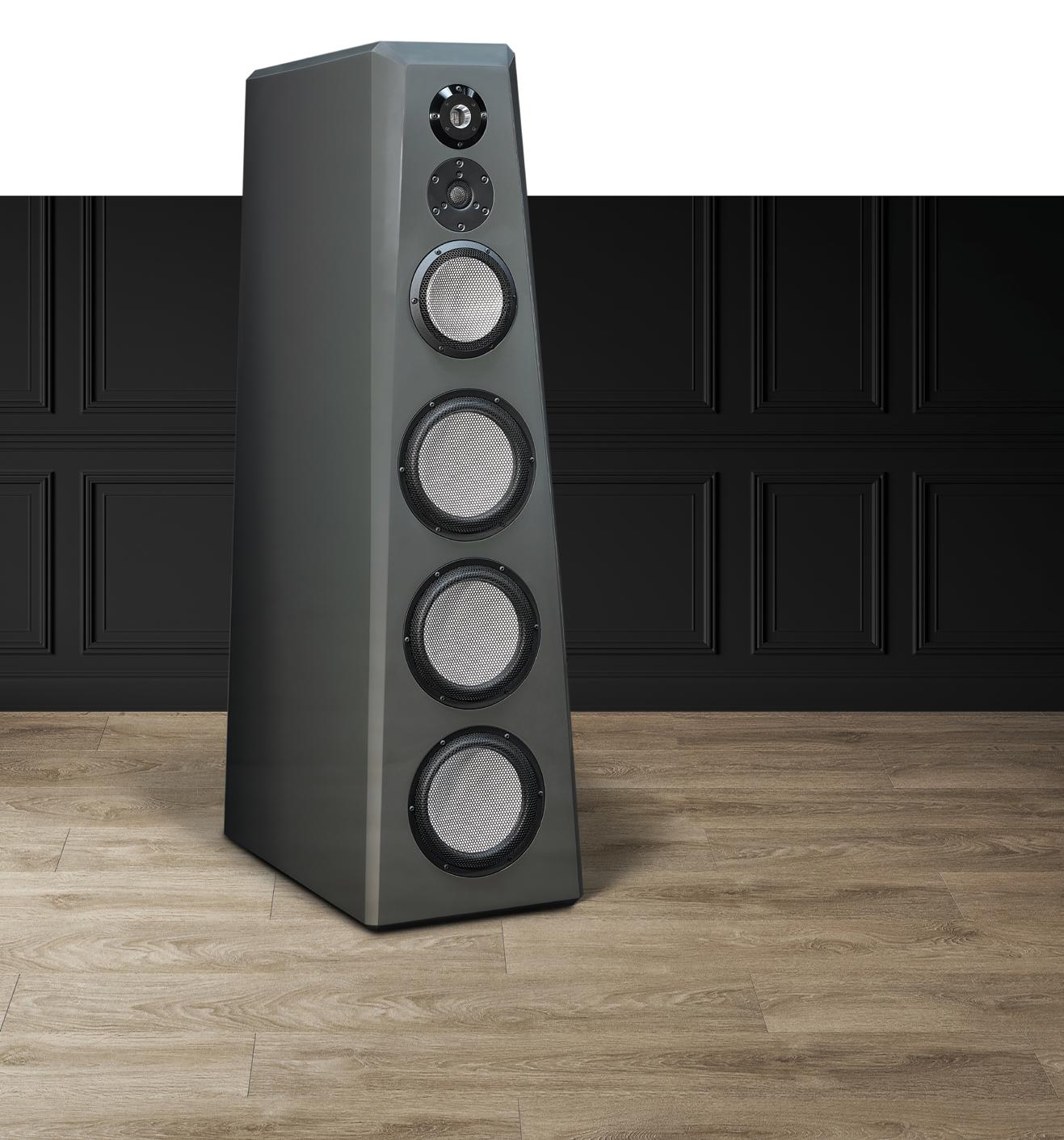

by Robert Baird
ASK AN AVERAGE TEENAGER TODAY WHETHER THEY CAN NAME A LED ZEPPELIN SONG AND YOU’LL MOST LIKELY GET AN EYE ROLL AND A DISENGAGED STARE. THE SAME PHENOMENON OCCURS WHEN THE ROLLING STONES AND, YES, EVEN THE BEATLES ARE MENTIONED. ONE OF THE ONLY EXCEPTIONS TO THIS PERVASIVE “OLD BAND” RULE IS QUEEN. THEY HAVE SOMEHOW STAYED ALIVE AND RISEN ABOVE THE CLASSIC-ROCK ABYSS. IN A CLASS I TEACH AT CUNY (CITY UNIVERSITY OF NEW YORK), I SHOW VIDEO GAMES: THE MOVIE, WHICH USES THE QUEEN SONG “DON’T STOP ME NOW” AS ITS THEME. WHEN I PROPOSE THAT ANYONE WHO CAN NAME THE TUNE GETS EXTRA CREDIT, TO MY SURPRISE THE CLASSROOM INEVITABLY BECOMES A SEA OF WAVING ARMS WITH AT LEAST HALF THE STUDENTS SHOUTING OUT, “QUEEN!”.

The band’s multi-generational, seemingly immortal popularity has again become a puzzle worth solving with the release of the remastered Queen Rock Montreal, a triple-LP set first released in 2007 as the soundtrack to the concert film, We Will Rock You, which itself has since been re-released as Queen Rock Montreal. The film and audio were recorded during a two-night stand at the Montreal Forum on November 24 and 25, 1981, which were the closing shows of the band’s The Game Tour. The film and au-
dio elements from the show have now been remastered and reissued to coincide with the IMAX release of the film. The new 4K Ultra HD Blu-ray ofers the choice of seeing the film in a full-frame aspect ratio or the original 16.9 widescreen. It also features, for the first time, Dolby Atmos audio. Like the original 2007 release, the 2024 Blu-ray edition includes the band’s performance at the 1985 Live Aid concert, as well as rehearsal footage captured prior to Live Aid.

The most obvious and poignant reason for the band’s continued relevance is the 2018 release of the biographical film, Bohemian Rhapsody, for which actor Rami Malek won the Academy Award for Best Actor for his role as singer/frontman Freddie Mercury. The tragic and too-public death spiral of the irrepressible Mercury has always added emotional weight and genuine pathos to the band’s story.
The most crucial factor, however, in their continued popularity, or at least name recognition, is that by any measure Queen was a strong, cohesive four-man unit who could write hit singles. The Montreal performance shows them to be a tight, well-oiled machine, hitting every downbeat and nailing every solo. And when it came to radio play, they were one of rock’s greatest singles machine. In 1981, Queen released their Greatest Hits album which hit #1 in the U.K., went nine times platinum in the U.S., and charted at #4 in Canada.
As proof of their ability to craft everlasting songs, Greatest Hits has charted again all over the world nearly every time it’s been reissued. It’s most recent 2023 reissue reached #4 in the U.S. and #30 in Canada.
It’s silly and immaterial to say that the band only performed flamboyantly on these tracks because they knew they were being filmed—flamboyance was Mercury’s stockin-trade and ultimately what made him and his band famous. The former Farrokh Bulsara, Mercury’s birth name, is in spectacular voice throughout this performance. Near the end of this extended 28-track set is a version of the anthemic “We Are the Champions” that
is straight up definitive. When he passionately belts out the rising lyrics—”But it’s been no bed of roses/No pleasure cruise/I consider it a challenge before the human race/And I ain’t gonna lose”,—it’s nearly impossible not to be emotionally swept up. The crowd, whose noise is kept to a minimum in the mix, is wildly appreciative throughout. Always an underrated, if completely unmentioned part of Mercury’s gifts is his piano playing; heard in “Champions” and “Somebody To Love”, among other tracks, it is an essential part of Queen’s musical spectrum. Very clear, even without the images from the film to confirm it, Mercury is in command of the performances throughout. By 1981, Queen was arguably the biggest stadium act in the world.
Brian May’s guitar work on Queen rocks Montreal is superb. While the band members may not be thought of as exceptional on their instruments, even by the reduced standards of the world of stadium rock, drummer Roger Taylor and bassist John Deacon do have a talent essential to the band’s songwriting: their strong, sometimes high-range backing vocals. This clearer, more pronounced remastering, accentuates the fact that the band’s layered vocals, especially on “Bohemian Rhapsody,” are truly one it’s greatest strengths. Listening to the thundering, accomplished version of “Rhapsody” here, it’s easy to again marvel over one of the eternal mysteries surrounding Queen: how did an overblown, pseudo-classical, generally undefinable mash up like “Bohemian Rhapsody” become a single, let alone a hit?

While there’s always an argument to be had about set lists when it comes to live albums—”Why didn’t they include that song?”— the band does manage to hit most of the highlights here. Oddly enough, in my book at least, they do not play the aforementioned “Don’t Stop Me Now”, which was part of their 1978 album, Jazz. According to metal music website Loudwire.com, which cites a 2015 study

reported in the U.K. newspaper The Telegraph, “Don’t Stop Me Now”, due to its beatsper-minute count and the chords used, is the world’s “most uplifting” popular music song.
Another clue as to why the band’s popularity endures is Mercury’s connection with fans, one he constantly egged on with his famous call-and-response interludes, heard here in “Now I’m Here”. One interesting aside is that Mercury and the band do not spend any time in this long set kibitzing with the crowd. Band introductions are absent, though at this point in their career they might have been superfluous anyway. The show is very businesslike: the band comes out and runs through the 28 songs with clean professionalism. This was the era when bands usually tried to replicate their studio albums when they played live. It was a trend some fans loved but others, like me, grew bored with, especially if the band could really play their instruments. Going to see a band like the Eagles in concert could be an exercise in frustration. Why pay for a live show when you could hear nearly the exact the same thing by just sitting at home and listening to Hotel
California? If there is any flaw to this otherwise classic document of the band near or at the peak of their powers, it’s that Queen Rocks Montreal is very sleek, unrelentingly brisk, and authoritatively predictable.
Sonically, what’s new here is that, compared to the original 2007 CD and LP releases, the sound is now fuller and warmer, with more low-end response and a generally more muscular presentation. Mercury’s vocals, which rung out in the original release, blend better in the mix even though this is not a remix. Brian May’s guitar is especially sharp and prominent. With lacquers cut at Abbey Road Studios and vinyl pressed at Optimal in Germany, this set’s trio of LPs is flat, quiet, and of better quality than most major label mass pressings.
Bombastic? Completely and without even an ounce of restraint! Overwrought? At times, yes, and to great efect. In 1981, in Montreal, Queen was true rock royalty.


LET’S GET ONE THING STRAIGHT: AUDIO QUALITY STARTS WITH THE CHAIR. SURE, YOU’VE BEEN BRAINWASHED INTO THINKING IT’S THE SPEAKERS, THE AMPS, OR THE ACOUSTICS OF YOUR ROOM THAT MATTER MOST. WRONG. THE PERFECT LISTENING CHAIR™ (PLC) IS THE ONLY THING STANDING BETWEEN YOU AND AUDITORY NIRVANA. AND, FRIENDS, THIS ISN’T JUST ANY CHAIR. THIS IS A PRECISION-LEVEL CALIBRATION SYSTEM, SCIENTIFICALLY ENGINEERED BY THE WORLD’S LEADING CHAIR ENGINEERS.

by
Turns out, every major technological breakthrough—from space exploration to supersonic jets—starts with the chair. Think about it: you’re not gonna successfully pilot a spaceship to Mars while sitting cross-legged on the floor, right?
That’s why the Chair Engineering Division (CED) at NASA has been optimizing seats for decades. NASA knows that true breakthroughs don’t just happen with rocket engines and heat shields—sometimes, it’s the chair that makes all the diference. Just like Velcro, freeze-dried food, and memory foam, all born from NASA’s innovations, their advancements in seating technology have filtered into everyday life.
So naturally, when it came to designing the ultimate audiophile experience, we turned to the elite minds of chair science to develop the Perfect Listening Chair™. The same cutting-edge research that’s gone into astronaut seating now comes home to your living room.
Let’s face it—your body is the enemy of perfect sound. Every breath, every pulse, every little movement sends shockwaves of imperfection into your otherwise pristine listening environment. Your lungs? A pair of over-enthusiastic bellows, exhaling air in a chaotic stream of sound disturbance. Your stomach? A bubbling cauldron of gurgles and groans, fighting the acoustics like it’s auditioning for a role in a horror movie. And let’s not even talk about your heartbeat—that relentless thumping, a drumline no one asked for.
But fear not, the Perfect Listening Chair™ has it all covered. SubsonicBody Dampening™ neutralizes every organ’s auditory ofenses. Those bellows you call lungs? Silenced. That grumbling stomach? Muted. Even your heart’s rhythm is integrated into the musical flow, transforming your body from a walking cacophony into a finely-tuned vessel for sound.
Positioning is everything. That’s why the Neuro-Acoustic Head Dock™—the pinnacle of headrest design—does more than just support your neck. It aligns your head at the exact angle required for optimal sound recep-
tion, calibrated to the millimeter. Our engineers discovered that tiny, involuntary movements in your head, what we scientifically term BrainBounce™, can cause significant disruptions in sound clarity.
The headrest compensates for this by using CranialWave Compensation™, ensuring your ears remain perfectly aligned with your speakers. In essence, it transforms your head into the ultimate sound receptor, perfectly calibrated to your high-end system. And with Reverb Cancellation Padding™, those pesky soundwaves that might otherwise ricochet away are absorbed and repurposed, powering the chair’s built-in AutoAcoustiMassage™ system. Because why waste good vibrations when you can convert them into a full-body massage?

But we didn’t stop at just making the chair perfect. Oh no, we might have gone too far. You see, the Perfect Listening Chair™ is so advanced, so completely in tune with your body’s every movement, sound, and desire, that it creates an experience so perfect…you may never want to get up. And why would you? You’re cradled in acoustic perfection, massaged by surplus sound waves, your body temperature maintained in a climate-controlled cocoon of luxury. And then it hits you: Why would I ever want to leave? And therein lies the problem. People don’t just sit in the PLC—they become part of it.
Introducing The PLC-X – For Those Who Never Want to Get Up Again
Enter the next step in audiophile evolution: the PLC-X. This isn’t just a chair. It’s your forever chair. Equipped with Full-Mobility Integration™, the PLC-X allows you to move around your home—nay, the world—without ever leaving your seat. Featuring a sleek, remote-controlled base, the PLC-X glides effortlessly from room to room, ensuring you remain in a state of perfect acoustic harmony wherever you go.
Need to get to the kitchen? The PLC-X has a pre-programmed trajectory to avoid kitchen clatter that could ruin your listening experience. Heading to bed? No need—the chair reclines into a SleepSync™ Mode, where it mimics the perfect sleep posture while playing subtle binaural beats for ultimate relaxation. You are the chair now.
Sure, some might call this extreme. They might say, “But don’t I need to stand up, stretch, and move once in a while?” Well, not anymore. The PLC-X has you covered with integrated Neuro-Acoustic Muscle Stimulators™, gently firing electrical impulses to keep your muscles in peak condition without you ever having to leave the comfort of your seat. You’ll be in Olympic-level shape…without ever standing.
And for those with an insatiable appetite for sitting supremacy, the PLC-X Infinite™ is on the horizon, and it’s not just a chair—it’s your gateway to ultimate control. With Holo-
Presence™ 360, a full-body holographic projection surrounds you at all times, making it look like you’re standing, even when you’re reclining like a monarch. In meetings, concerts, or even casual conversations, you’ll appear fully upright, radiating power and presence without ever leaving your seat.
And that’s not all. Harness the mind-bending power of NeurAudioSync™, which lets you literally control soundwaves, manipulating conversations, music, even the environment around you with a mere thought. Telepathic commands? Easy. Want to change the song, call someone, or project your thoughts into someone else’s head? Just think it, and it’s done—no buttons, no voice commands, just pure mental mastery.
The Perfect Listening Chair™ began as a quest for pure sound. But in the pursuit of perfection, we may have created something greater—a new way of life. So, whether you’re a casual listener or a die-hard audiophile, the PLC-X is here for those who realize that the ultimate luxury is never needing to stand again.
Let your legs rest, let your ears rejoice, and let the Perfect Listening Chair™ guide you into a brave new world of sound and sedentary supremacy. Because at this point, why would you ever get up?

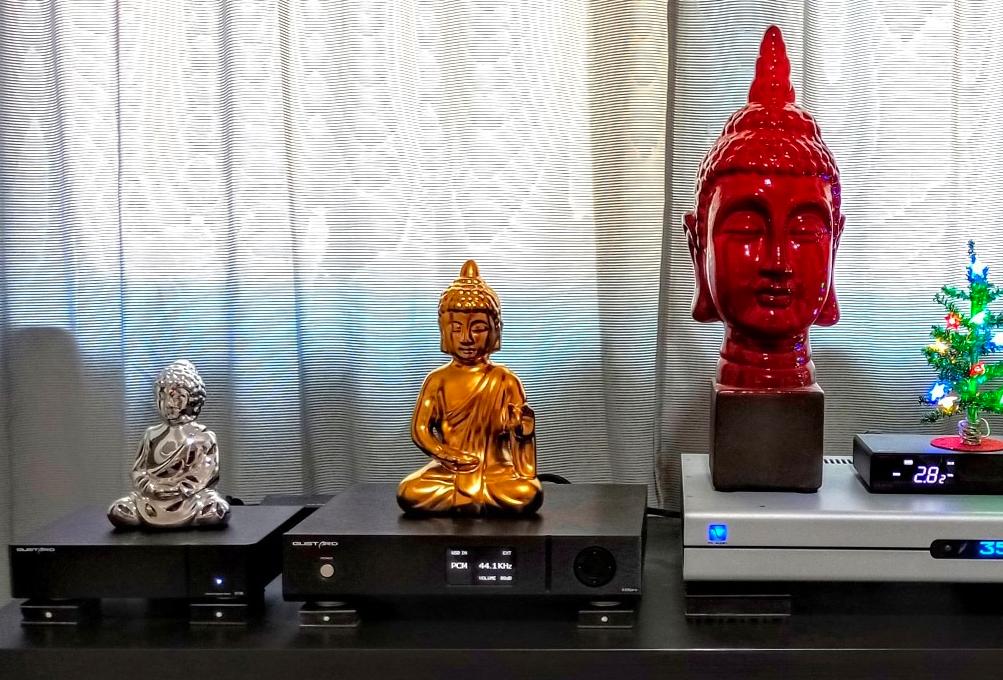
by Tom Gibbs
OVER TEN YEARS AGO, I STARTED MY JOURNEY IN DIGITAL AUDIO STREAMING WITH AN ORIGINAL HIGH RESOLUTION TECHNOLOGIES (HRT) MUSIC STREAMER—WHICH WAS A FAIRLY UNOBTRUSIVE LITTLE DEVICE AIMED PRIMARILY AT NOVICES IN COMPUTER-BASED AUDIO.
BUT OVER THE COURSE OF SEVERAL YEARS, EACH SUCCESSIVE MODEL IN THE HRT LINE INCORPORATED MORE ROBUST CIRCUITRY AND SUPPORT FOR HIGHER STREAMING RATES. THE LAST HRT MODEL I EVALUATED, THE STREAMER HD, CONVINCED ME THAT IN MY RELATIVELY PEDESTRIAN AUDIO SYSTEM, IT WAS AS MUCH AS I’D PROBABLY EVER NEED FOR TRUE STREAMING HAPPINESS. BUT THEN I GOT “THE EMAIL” THAT TURNED MY STREAMING DIGITAL AUDIO WORLD ON ITS HEAD!
The email came from Dalibor Kasac, who was with Euphony Audio in Croatia—they’re the guys who make the Euphony Stylus operating system and the Summus streaming/server setup that’s been the focal point of my digital audio system for the last five years. At the time the email arrived, I didn’t have a clue who they were, nor was I keen to take Dalibor up on his
ofer to review the Stylus, especially since I’d just sold my house and was living in my brother’s basement for the next nine months, with all my stereo equipment packed away in a storage locker while my new home was being built. But no matter how many ways I tried to explain the situation to Dalibor, he wouldn’t take no for an answer, and for some insane reason, he seemed to think that I was the guy
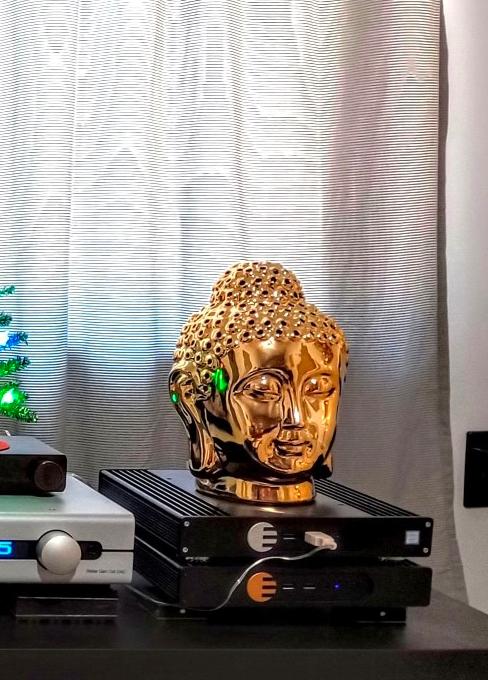
who would help introduce Euphony Audio to the masses. I was reasonably convinced that Dalibor was insane, and besides—I was this relative nobody who’d barely dipped his toes into digital streaming. Still, we struck an agreement that as soon as I was set up in the new place, we’d get back in touch and go over the details.
A lot transpired over the next year or so. It took nine months to build the house, but it took forever to actually get to the point where setting up the stereo was finally a priority in the move-in process. When Dalibor and I eventually reconnected, Euphony’s Stylus was now no longer just an operating system you loaded on to your own computer—it was a turnkey, plug-and-play hardware system, which made the deal even more efortless for me to embrace. Over the years, Stylus has gone through several iterations and upgrades, and has evolved into a first-class high-end solution for all your digital needs, including streaming, server and library management, and the crème de la crème: a world-class music player. And it’s a very refined setup, such that three years ago, I no longer felt the need to continue my Roon subscription—besides, the sound quality of Euphony’s music player completely smoked Roon! I upgraded to Stylus 4.0 last year, and it’s a major improvement in terms of the appearance of an already great GUI (Graphical User Interface) and by ofering several key upgrades that have lifted the sound quality to an impressive level of goodness. My upgrade to Stylus 4.0 also included a subscription to Mozzaik upsampler—more about that in a bit!
Over the years, Dalibor and I have consistently stayed in touch, and Euphony has also become a distributor for a range of high-end audio equipment from manufacturers mostly located in the EU. Through them, I evaluated Germany’s Naiu Laboratories Ella power amplifier, a top performer that’s been driving
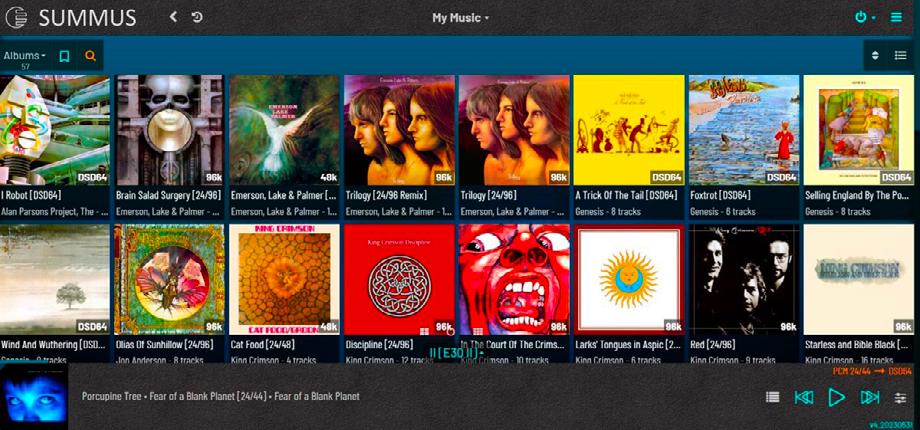
the loudspeakers in my digital source system for a couple of years now. Dalibor and I may go months at a time without contact, followed by furious flurries of activity. That happened last year, when he reached out to me to detail Euphony’s experiences with a new delta-sigma DAC from Topping, the E70 Velvet, which, based on its chip configuration, could be used as a DSD-direct DAC. Not long after that, Dalibor and his business partner, Robert Devcic, discovered that Topping’s then newest DAC, the bargain-priced E30 II ($150), bettered the performance of the E70 Velvet, and by a wide margin. They’d been experimenting on it for months and had reached the conclusion that it was a giant killer.
About ten days ago, Dalibor again reached out to me via email to follow up on his enthusiasm for their continued good experiences with the Topping E30 II DAC, with particular emphasis on its performance as a 1-bit DSD-direct DAC, in a new and exciting implementation. I grabbed one from Amazon, and I’m completely gobsmacked by how very good this little DAC is, especially considering its miniscule price tag. But the real shocker for me came when Dalibor asked me to disassemble my current digital streaming setup—including half the Euphony setup I’d been enjoying for years.

That system, which had held the status quo in my home for several years, featured the du-
al-box Euphony Summus/Endpoint setup, which included a pair of Intel NUC mini-computers housed in custom Akasa cases. Of the two, the Summus was the higher-powered unit (Intel Core i7), and provided the music server/ library organizer/music player function; the Endpoint (Intel Core i3) was nearly identical in appearance, and predominantly functioned as the streamer. Dalibor and Robert always insisted that separating the streaming function to a second unit would result in a step up in sound quality, and that has always been my experience. The digital stream would then travel, via a superior i2S connection, to the Gustard X26 Pro DAC, which was also connected to a Gustard C18 clock via a BNC digital cable. It’s a system I agonized over, especially with regard to matching everything with the right digital cables from Audio Art Cable, Oyaide, and Sommer. I honestly felt it could hold its own against digital source systems of a much higher pedigree, and I was perfectly happy with the system’s sound quality.
During a WhatsApp call, Dalibor instructed me on the changes that needed to be made to my system. First, I’d need to access the BIOS of the Euphony Summus device, which proved to be trickier than I remembered. The Euphony OS runs on a highly modified version of Linux, which is a diferent animal than Windows or Mac, and I needed a USB keyboard and monitor to access the system BIOS to make the changes that would allow Euphony Summus to have the processing performance boost it would need for the new configuration. Once that was accomplished, I would then disconnect and remove the Euphony Endpoint, and follow that process with the removal of both Gustard components. Whoah! In one fell swoop, I was losing the advantage of a separated streaming device, losing the superior i2S cable and connection, and losing what I considered to be a world-beating DAC in the Gustard X26 Pro and the C18 clock unit. I’d then connect the new Topping E30 II DAC with the Oyaide USB cable to the Euphony Summus, and activate Mozzaik upsampler in the Summus’s menu settings.
The Mozzaik upsampler software plugin comes from Mozzaik Audio, another EU company that ofers both hardware and software
solutions for high-end audio. The software converts all bit-and-sample rates of PCM to DSD64 (SACD quality) for exclusive DSD playback through your DAC. Mozzaik’s lengthy development process abandoned traditional filter models, and created a highly specialized DSD modulator that incorporates proprietary upsampling filters. The upsampler’s designers fine-tuned their proprietary filters by ear and enlisted the assistance of listening panels to help in the process. Euphony’s Devcic participated in the listening panels and was able to secure licensing rights for the upsampler’s use in Euphony’s Stylus 4.0 release in 2022. Dalibor graciously granted me a one-year subscription to the Mozzaik upsampler for evaluation in my system.
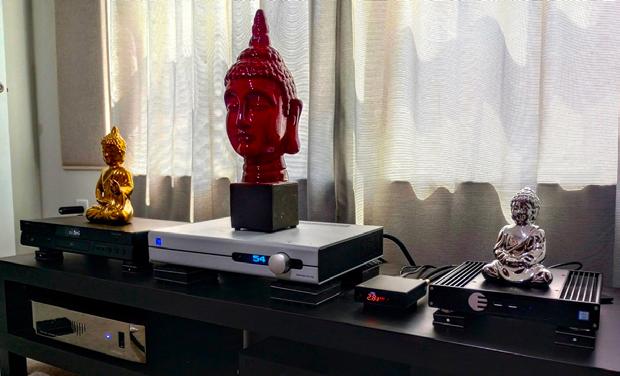
In efect, what Dalibor was asking me to do was remove nearly $8000 in equipment from my system, and replace it with a DAC only slightly larger than a deck of cards that retails for $150. Adding insult to injury, I’d also be removing the i2S connection and replacing it with what I regarded as an inferior connection—USB. Sensing my lack of enthusiasm on that front, Dalibor assured me that the USB connection has made incredible strides in recent years, with enhanced compatibility and improved sound quality that’s virtually on par with the über transparent i2S. Turns out, the Euphony Summus was absolutely capable of doing the heavy lifting—even minus the Euphony Endpoint—and that $150 Topping DAC was a wunderkind among reasonably-priced digital to analog converters! On Dalibor’s rec-
ommendation, I also ordered a USB battery from eBay ($25) to power the DAC; Dalibor says taking the DAC “of the grid” moves it to a diferent level of transparency and sense of efortlessness.

The E30 II is Topping’s second DAC in their line to feature new production AKM chips. It difers from the previous E70 Velvet DAC in that it utilizes a pair of AKM AK4493S chips—one for each channel. The E70 Velvet used a single AK4499EX chip, but significant advances have been made since, and the pair of AK4493S chips used in the E30 II ofers an improved level of performance by separating the transfer function into a dual-mono setup. As with the E70 Velvet, the E30 II also incorporates what AKM refers to as their “Velvetsound” technology, where DSD playback can be configured to avoid the dreaded delta-sigma process, where both PCM and DSD are combined in the DAC’s throughput, which ultimately colours the sound of everything that emerges, especially that of DSD files. Dalibor told me that while he and Robert were initially impressed with the sound of the E70 Velvet, they’ve come to appreciate the more modestly priced E30 II to an even greater degree. The only other major diference in functionality is that the E30 II has no balanced outputs, which in no way was a deal breaker for me. At $150, my only point of indecision came when I had to decide what colour to get it in—black, silver, red, or blue. I really wanted a red one, but I could get the black one in two days from Amazon versus ten days for any other color, so that made the decision easy for me.
Here’s where the Mozzaik upsampler comes into the picture. With Devcic having been an active participant in its developmental trials,
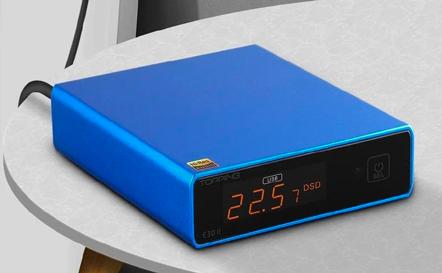
and with almost two years of evaluation of the Mozzaik software in combination with Euphony equipment, he and Dalibor are impressed with its capabilities, and especially its musicality. And it makes complete sense in this implementation to convert everything to DSD. Other manufacturers—PS Audio, for example—converts everything to DSD64 in their top-of-the-line DirectStream DAC. And by combining the Mozzaik upsampler with the Topping E30 II, and converting everything to DSD, you bypass the delta-sigma function, making the E30 II a 1-bit DSD-direct DAC. When Dalibor had me set up the Euphony Summus for enhanced processing power, that transformation was essential to its ability to transcode the PCM files to DSD64 prior to them being sent to the Topping E30 II.
There’s a specific setup sequence in the Topping E30 II’s menu to guarantee DSD-direct playback; the E30 II has volume control capability, and you have to defeat that, which sets it to DAC-only mode. Otherwise, using the digital volume control sends
everything through the delta-sigma modulation. In normal use, the Mozzaik transcode process is fairly efortless; in the Summus’ setup menu, you simply select the upsampling mode, and everything gets transcoded to DSD64. That said, my music server has more than 400 DSD albums on it, and you don’t want to transcode existing DSD files. So when playing PCM files, click upsampling on, then of again when playing native DSD files—it’s a surprisingly fluid process, with no hiccups when switching between modes. Dalibor, who isn’t a fan of DXD files, which are the highest resolution PCM files that currently exist, feels that transcoding them to DSD greatly improves their musicality.
My evaluation was done using the system that features PS Audio’s Stellar GainCell preamplifier, the Naiu Labs Ella power amp, and a pair of Magneplanar LRS loudspeakers used with two Vanguard Caldera 10 subwoofers. I felt I needed to give the Topping E30 II several days to burn in for best playback results, but when I started listening critically, I was seriously impressed with what I was hearing from a $150 DAC, especially compared to my experiences with the other, much more expensive equipment in the playback chain. I mean, hearing the Topping E70 Velvet was originally an eye-opener last year, but the E30 II provides a much more organic sound quality than the Velvet, that approaches that of good
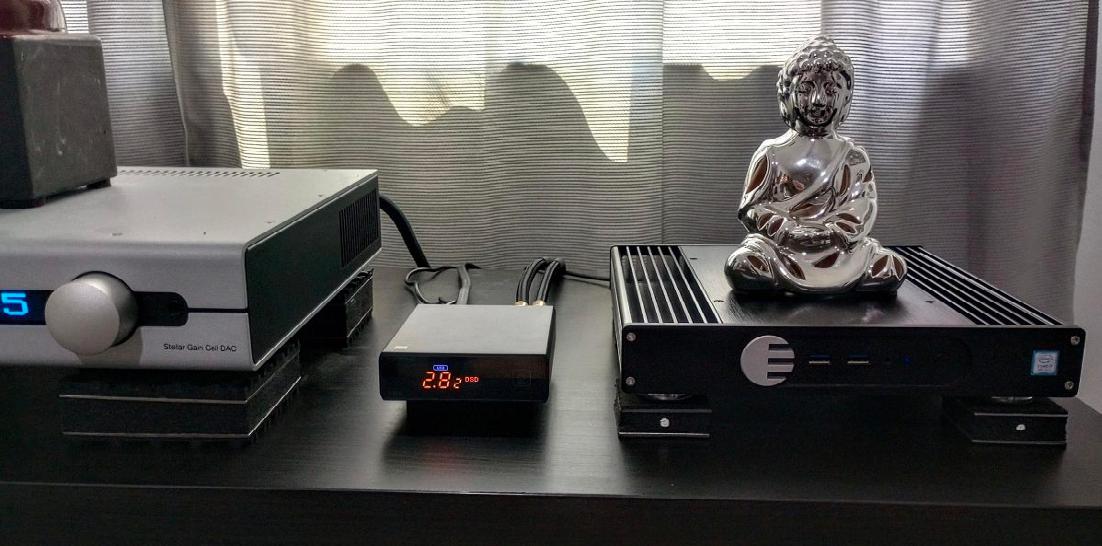
analogue reproduction. I played tons of native DSD files I was intimately familiar with, and they were all rendered with increased clarity and transparency, with improved imaging, and with a much more liquid midrange and highs that simply sparkled. Compared to my previous digital source system with either the E70 Velvet or Gustard X26 Pro DACs, the sound of DSD files was now mind-bogglingly good. I’ve always been a proponent of great sound on a budget, but the Topping E30 II takes that approach to a new low. Low price, that is!
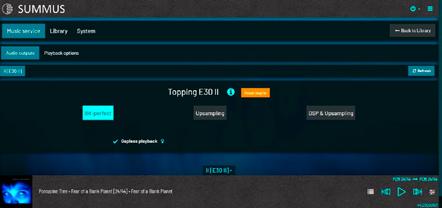

Via the Mozzaik upsampler, the gains achieved from transcoding PCM files of every rate to DSD64 were remarkable. I was shocked by how good my CD-quality rips sounded when compared to the delta-sigma-processed alternative, and I felt that the transcoded PCM files of higher-than-CD resolution were even better! CD-quality rips that perhaps had sounded less than fully fleshed-out now were presented with a greater sense of realism; there was a more pronounced stereo image, and analogous to my playback of native DSD files, the transcoded PCM playback sounded much more… analogue. I have a playlist of about 100 tunes across all genres on my server, a mix of PCM and DSD files I typically use for equipment evaluations. Since the arrival of the Topping E30 II and Mozzaik upsampler, I’ve broken it apart into two separate playlists, one for PCM files and another for DSD. This allows for easy continuous playback of the tunes on the respective playlists without the need to frequently switch between transcode modes. I’ve even been listening to a ton of old stuf mostly CD rips—that I hardly ever listened to anymore, and their sound quality is soooo much better than I remembered it being on the old system.
I’ve been closely associated with PS Audio’s equipment for years—I own the company’s Stellar preamp, Stellar phono preamp, and a pair of M700 amplifiers. And I’ve had a fairly constant awareness of the raves for their DirectStream DAC, which, of course, converts everything to DSD prior to playback. But its $8000 price tag has always been prohibitively expensive for me. I constantly thought about the potential benefits of converting PCM to DSD, and as a years-long Roon user, I experimented at some length with Roon’s built-in upsampler, which I found to be half-baked at best, yielding less than satisfactory results. Of course, the less-than-stellar complement of equipment I was using at the time could very well have been a contributing factor, but my current experiences with the Topping E30 II and Mozzaik upsampler have bolstered my opinion of PCM to DSD conversion.
To Come!
Euphony is in the process of building a statement, single-box streaming solution that will include dual motherboards to separate the streaming and server functions as in their dual-box Summus/Endpoint setup. The new system will also include the latest implementation of Mozzaik’s software, which will upsample everything to DSD128. In my experience, higher DSD rates are better, and always result in digital sound that’s closer to that elusive analogue-like absolute sound. More to come as the development of the new machine evolves over the next six months or so. I’m awaiting its arrival with intense excitement! In the meantime, the overachieving Topping E30 ll is keeping me very happy.
I LOOKED AT THE CLOCK. THE TIME WAS MOVING CRAZILY AT WARP SPEED. IN FIFTEEN MINUTES, I WOULD BE DRAGGING MY LITTLE SISTER SEVERAL CITY BLOCKS TO THE 69TH STREET PLAYGROUND FOR THE BIG EVENT. I ALWAYS HAD TO TAKE HER EVERYWHERE. THE WALK WAS A LITTLE SCARY BECAUSE WE HAD TO CROSS THE RAILROAD TRACKS. I HAD HEARD THE STORIES OF LITTLE GIRLS WHO HAD BEEN ATTACKED THERE. SOME HAD DISAPPEARED, THEY SAID. I THOUGHT MAYBE THESE WERE MADE UP STORIES SO WE KIDS WOULDN’T LINGER AT THE TRACKS. BUT I DID SEE THE BAD BOYS, THE OLDER BOYS WHO HUNG OUT THERE. THE BOYS WHO SMOKED AND LAUGHED AT DIRTY MAGAZINES AND WOLF-WHISTLED AT PASSING GIRLS.

With the playground in sight, fear turned to excitement. Two large men were wrestling equipment into place on the asphalt. A huge box was angled sideways in the open trunk of a dark blue car, cables stretching to our shady cement area. The shadow of another man with his hands on his hips stood nearby.
“Hurry up you two,” said the pimple-faced counsellor who liked to play tag with us and win, as he waved us wildly by.
Today was the biggest deal of all our lives. The famous Chubby Checker had picked our playground to test out his new dance which had been born in our very own Philadelphia, and which was all the rage with the older kids at school, the ones who were almost teenagers. The real live Chubby Checker, the Philly superstar we had all been hearing about had picked us! Oh, we were used to fun treats like hula-hoop contests with the reigning teenage champion. Or having a real artist
by Grace Bubulka
who taught us to finger paint on the backside of some left-over wallpaper, courtesy of the Franklin Wallpaper Store.
Considered “underprivileged”, we immigrant Philadelphia outskirt kids would get lots of free stuf. Some of it was not so good, like the warm carton of milk with our name on it that we had to drink before we left the city playground because they said we were all too skinny.
The counsellor was still waving as he shoved me and my sister through the gate and safely locked us and another dozen skinny towheads inside. The other counselor, the nice one—Tammy, I think—slapped her hands together loudly, drawing our attention.
“Line up kids,” she said.
We always had to line up for everything. Boys in one line, girls in the other. It was hard to keep to our lanes as we jumped up and down and stretched our necks as far as they would go to see Chubby. The counselors stood in front of us making it impossible to see. Suddenly, the music stopped and the counsellors started to scream. Chubby was here! Somewhere. I couldn’t see him!
Then, a miracle!
Chubby waved his arms around, lassoing us closer together.
“Come on everybody!” he yelled.
“Yay!” We all yelled back.
“I can’t hear you!!!”
We all yelled louder.
“We’re gonna do the Twist and it goes like this…”
The music shook the entire playground, and cars outside the vibrating fence stopped, peering in on our special date with Chubby Checker.
Chubby smiled at me and I almost fainted. Having never seen a live coloured person before, other than on TV, like Buckwheat in “The Little Rascals”, I froze and stared. I couldn’t move. I couldn’t jiggle. And most certainly, I could not twist. I simply could not wiggle my chest one way and my behind in the opposite direction, slinky-like. He laughed in my direction, his eyes twinkling.
Chubby Checker seemed tall, but I wasn’t sure. The kids who liked to make fun of me had pushed me right up to Chubby. I stared at his legs. His black trousers had the proper crease
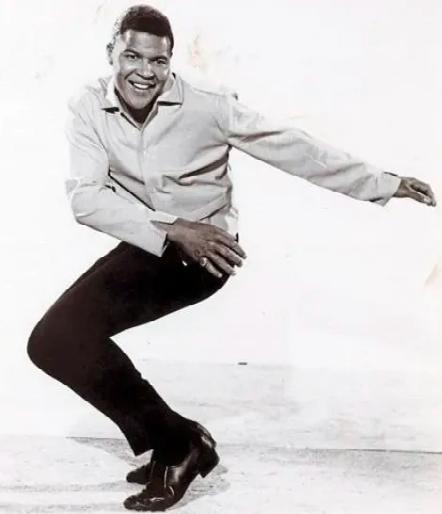
in them and his shoes were well-shined, so I wasn’t afraid. My mother had always said that ironed trouser creases and shoes with a high polish were indications of a true gentleman.
I gazed higher. Chubby’s big glistening teeth were whiter than white Chicklets. His black hair sparkled in the sunlight. And his smile… It seemed very kind. His happy cheeks were most definitely chubby. Now I understood how he got his name. Even though it was only 11:00 AM and Chubby had barely arrived, his white shirt was soaked to the skin.
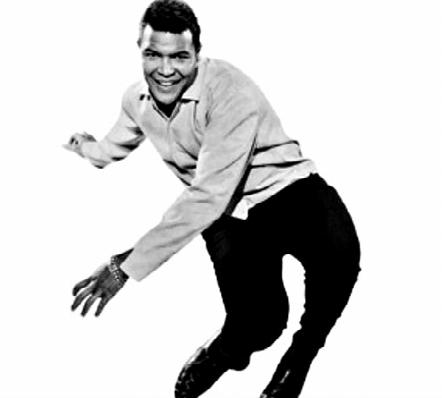
He leaned way down at me and said, “Come on little honey…”
I couldn’t move.
“We’re gonna do the Twist… and it goes like this…”
The men standing back by the speaker cranked up the volume and the whole playground erupted in shrieks. Chubby held a microphone up high in his sweaty right fist, the cord dangling over his head. He crooked his left index finger at me.
“…And it goes like this…”
His elbows and knees swung East and West, back and forth, back and forth. He called out to the girls that had pushed me to the front, who’d been hanging back against the fence laughing at us. He flashed his shiny teeth at them and waved at the boys, summoning them to the makeshift dance floor. Despite their tough exteriors, they twisted away.
When Chubby sang, his voice sounded higher-pitched than I expected, and I could see spit hitting his microphone. With a smile stretched across his smooth-skinned face, he
winked at all the girls.
My turn. I closed my eyes and started to twist with all my heart. With my sharp elbows flying and scabby knees gyrating, I twisted until noon.
Then the music stopped and, like in a dream, Chubby evaporated into the heat.
The blue car left and was swallowed up in trafc. I should have warned him about the train tracks. Be safe, Chubby. I should have ofered him my milk carton. You’re probably thirsty, Chubby. Or at least I should have shown him where the hose to cool of hung. It’s hot at the playground at noon.
The next morning, a picture of Chubby Checker smiled back at me from the Philadelphia Bulletin. “Chubby Checker Teaches Kids to Twist.” I cut out his picture and glued it into my scrapbook, smoothing his crinkly eyes, tapping his Chicklet teeth, touching his chubby cheeks.
Today, at the playground, we were going to make Fourth of July potholders. Big deal.
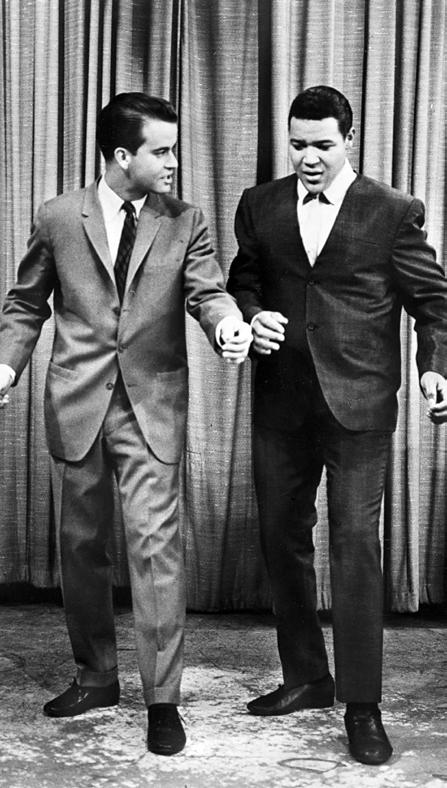



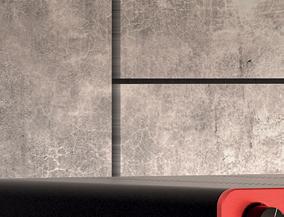

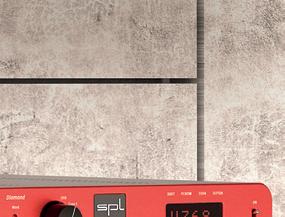

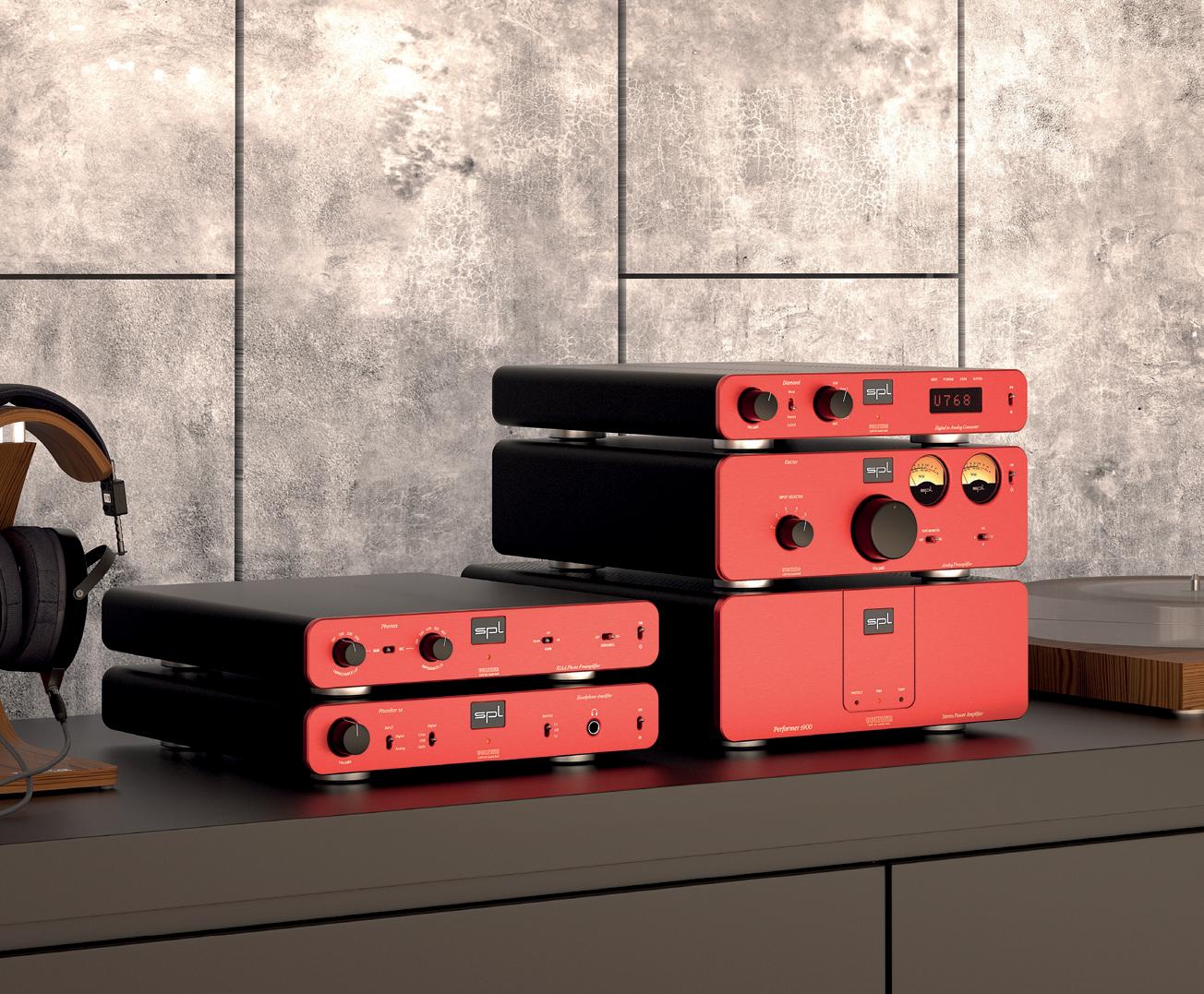




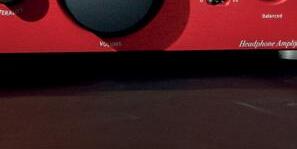
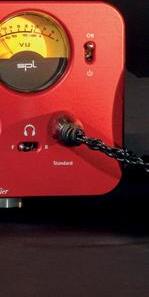










courtesy of Heaven 11 unless otherwise indicated.
by Robert Schryer
I REMEMBER THE FIRST TIME I SET EYES ON HEAVEN 11’S BILLIE AMPLIFIER. IT WAS AT A MONTREAL AUDIOFEST SHORTLY BEFORE THE PANDEMIC. THE DOOR TO HEAVEN 11’S ROOM WAS PLASTERED WITH A POSTER OF CHARLETON HESTON AS MOSES FROM HIS 1956 TEN COMMANDMENTS MOVIE, BUT IN PLACE OF THE COMMANDMENT TABLETS, MOSES HELD TWO GIANT PREAMP TUBES IN HIS ARMS. IT WAS A STRIKING IMAGE, AND SORT OF EDGY.
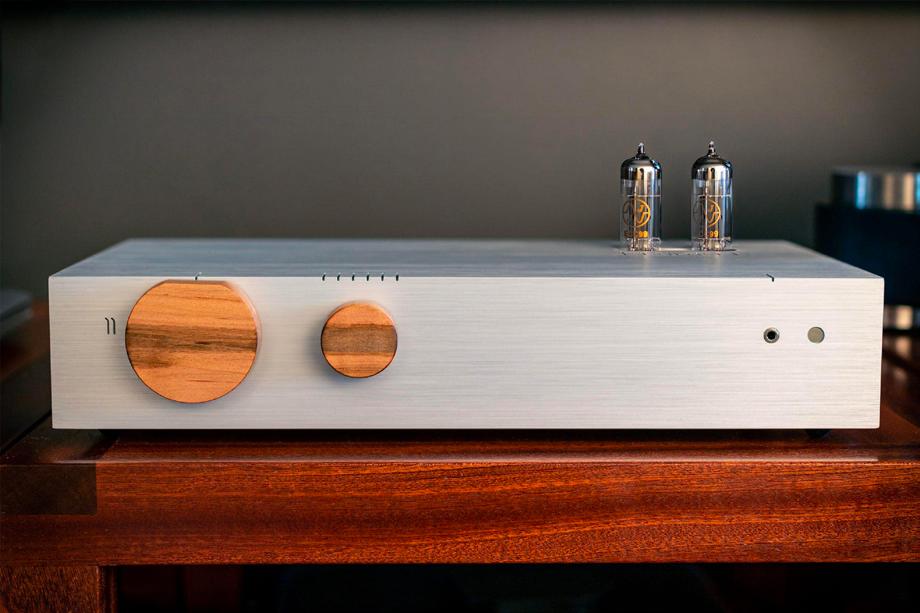
The inside of the room itself was semibathed in a smoke-like psychedelic red tint, while further right, at the end of a table under a glow lamp, sat a component adorned with only two big knobs and a couple of triode-looking tubes sticking out of its top. Its look, with its clean, unclut-
tered lines, and graceful aesthetic, immediately appealed to my purist audiophile sensibilities—no superfluous bells and whistles here to detract from what felt like the product’s main purpose—to play beautiful music.
It looked 7Wpc SET. It looked artisanal. It looked timeless. When I heard it, I was sure
invite you to celebrate a German Tradition it’s at audiofest
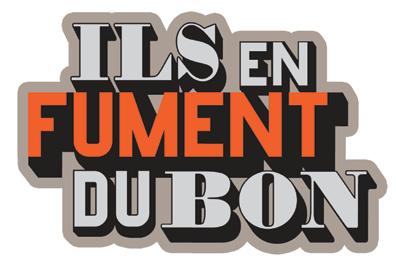
Enjoy a complimentary Gourmet Wiener from Saturday, October 19 11:30 AM to 4:00 PM

I was right; its sound was pure, colourful, detailed, and highly musical. I imagined I could hear the point-to-point wiring, the amplifier tube stage, the simplicity and low-parts count of a vintage design.
Those assumptions were dashed after I left the room with Heaven 11 proprietor Itai to ask him questions for my report. When I asked him to describe the Billie amp, it was like he was speaking to me in a foreign tongue.
“The Billie is a class-D amp with a tube input stage. It delivers 120Wpc. It’s equipped with a DAC, headphone jack, turntable input, and Bluetooth.” I blurted out several times “Wait, what?” as I tried to wrap my head around it all.
In those days, you just didn’t see class-D amps at an audio show, and certainly not a class-D / tube hybrid. Thinking back now on that moment when I first saw the Billie, sonamed in honour of Billie Holiday, and seeing how ubiquitous class-D has become since then, it’s hard not to feel awed by how ahead of its time the Billie was, as was Itai.
“Not only were standalone class-D amplifiers new,” said Itai in our interview at his sunny, high-ceilinged Montreal ofce, where we sat next to Billies on podiums and Magnepan and ESL speakers (Itai’s favourite speaker designs
are boxless.) “Class-A/B and class-A had pretty much hit their zenith. I don’t see class-A getting better. What’s better than (in reference to the transistors in the output stage) on all the time? Unless you integrate a cofee warmer into it, that’s about the only thing you could do that’s better, you know? Every year, class-D is getting better. It’s exciting. The last thing this exciting to happen to the audio world was the CD player.”
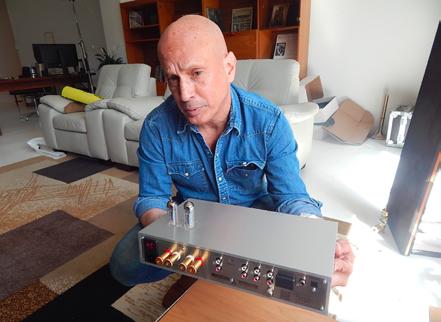
An industrial designer and musician who keeps a custom-built Gibson Explorer-type guitar at arm’s length in the room we were in, Itai financed the first batch of Billies through a Kickstarter campaign. It took longer than anticipated to get the product into the hands of backers—instead of 4 months, delivery took two years, during which Itai admits to having slept poorly amid a growing number of emails he was receiving from concerned backers.
Did he ever think that his project might not work?
“No,” he said. “As a designer, I follow the design process, or iterative process, which stipulates that as you’ve tried more things and there’s less other things to try, you’re eventually bound to fall on the right answer. People refer to the process as a circle, but to me it’s
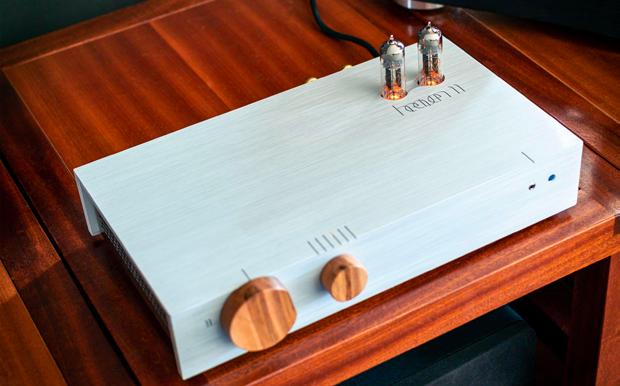
more like a spiral, because as you’re going through it, you’re getting closer and closer to the centre. So, I wasn’t discouraged, because I knew that was part of the process and that we would get there some day.”
The Billie’s design stems from a serendipitous chain of events that brought Itai’s pre-production 3D rendering of the integrated amplifier he envisioned into the hands of two successful local amp designers willing to help bring his concept to fruition—Sylvain Savard for the class-D section and Tenor Audio’s Denis Rozon for the tube one.
Now in Mk2 version, with MK3 slated to be released at the end of the year, the Billie employs the ICEpower 200AS2 class-D module. Apart from the module and some internal wiring, both sourced from Asia, the Billie is built and assembled entirely in a factory on the outskirts of Montreal.
When did Itai get the idea for the Billie?
“It started when I bought a country place and needed a sound system for it,” he said. “I had spoken about it to a design student of mine, who said I should check out class-D amps. I said, ‘Aren’t those shit?’, and he said, ‘No, no, there’s some pretty good stuf now’.
sounds good, but I would never put that in my living room’. That was the light bulb moment for me. The amp was basically this cigar box with a volume knob, with zero features—it didn’t look friendly.”
Itai saw an opportunity to fill a hole in the market.
“At the time, electronic components started appearing that had these LED screens with features and more features, and more LCD screens, and subfolders of folders,” Itai said. “It just killed the whole aesthetic of it. And because features are easier to implement than good sound, it also killed the sound. I progressively went down that slope of worse sound where it got to a point when I forgot what it was to sit down and listen to music. It was the same for my friends, who started getting rid of their bulky stereos and getting Bluetooth speakers. You would listen to them and, within 15 minutes, it was like, ‘let’s turn this of and continue our conversation’. And I wondered how I could make something desirable to those people.
“So when I had that revelation because of my brother,” he continued. “I called the Trends people and said, ‘I got this great idea,
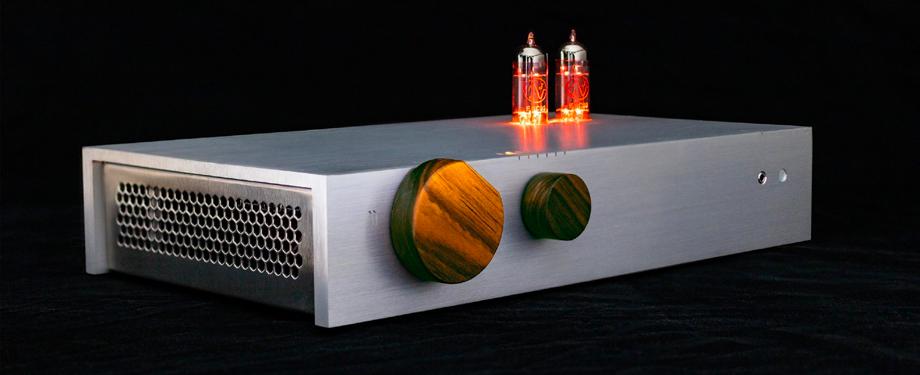
“I started researching it and I stumbled upon the Tripath class-D chip, which people were calling a giant killer,” he said. “It was being referred to as class-T to diferentiate it from the rest of class-D. So, I got a little Trends Audio 6Wpc amp from Hong Kong for $250 that used the Tripath chip. And it was quite amazing, The sound was very good. When my brother came to the country place, I made him listen to it. And he said, ‘Yeah, it
how about we pimp your thing’, and they weren’t really interested. They were doing their thing.”
It’s then that he felt a calling to do it himself.
“I just felt there needed to be something better, or else we won’t be talking about music,” he said. “And we are on this road now where things are becoming more dicey.”
In what sense?

“In the sense that I think that with Bluetooth speakers and the home theatre systems, what was being created was a disengagement with the music, where the music becomes the background, which is fine sometimes. But when you want to go beyond the background, it’s nearly impossible to do it with a Bluetooth speaker. You sit down, and next thing you know you want to do the dishes.”
One of the things Itai was most grateful for—he called it a masterstroke—was something he could have never predicted: how much Sylvain and Denis would get along. “To have two engineers get along, and like each other, and see each other outside of work, and have their wives like each other, that’s like, phew…”—he feigns wiping sweat of his forehead with the back of his arm—”I don’t know how I managed to get that one.”
Was he as lucky when it came to getting the class-D and tube sections to work well together?
“Oh, my God,” he said, shaking his head. “You have no idea. It was very hard. The first prototypes were very disappointing. The thing with the tubes was that any noise made by the electronic part of the amp was amplified 800 times by the tubes. It was very hard to get those two sections to behave well together.”
What part of the Billie’s design made the biggest diference to its sound quality?
“Putting the tube section into the class-D,” he said. “That still is the one thing that makes all the diference.” Beyond the sound, Itai believes tubes have something that class-D will never have. “Tubes are made by hand. Each one is unique. They’re not unwavering. They’re life.”
Was he completely happy with the Billie’s design?
“As a designer, I don’t think I’ll ever be happy. I’m eternally unsatisfied. I’m not a perfectionist—I don’t believe in perfection— but I do try to aim for perfection.
“Aesthetically, I think the choices I made for the Billie are appropriate for an audiophile, in that it evokes a certain gear lust,” he said. “But even the audiophile’s significant other who’s not interested in gear can appreciate it and say, ‘Okay, honey, you can have this on the credenza instead of in the credenza’, and this is when they listen to more music because—and this is important to me—the more you see something, the more you’ll use it. Design creates the interface between the human and the machine.”
“I can’t hammer this in enough,” he said. “We need to make gear and products that are not crazy expensive and that are appealing to people who aren’t necessarily already sold on the audiophile experience. My kids’ friends would come into my house and point at my system and say, “What is that?”. And I would play their favourite song on it and they’d be like, “Oh my God!”—Itai widens his eyes in a look of amazement— “They’d never had that experience.
“You and I grew up with that experience,” he continued. “These kids don’t grow up with these experiences because they listen to Bluetooth speakers or in-ear monitors. I want them to fall in love with good sound, but I also want to give people the features that allow them to listen to their music the way they want.”
Any new products on the horizon? “Not the very near horizon, but yes—a Quincy preamp and a Lemmy amp.”
Now there’s a match that promises to jazz up your life and rock your world.
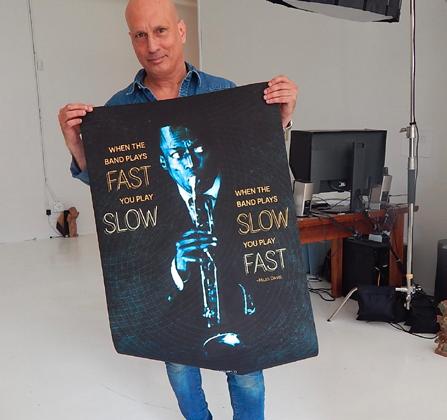
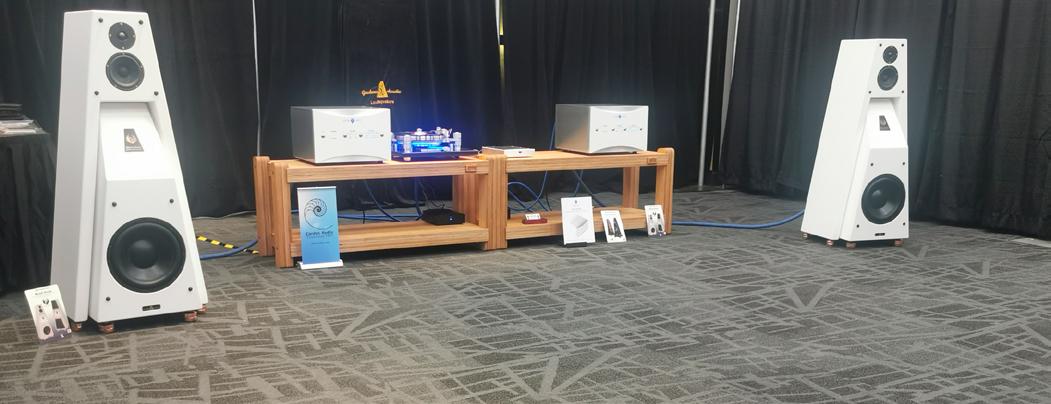



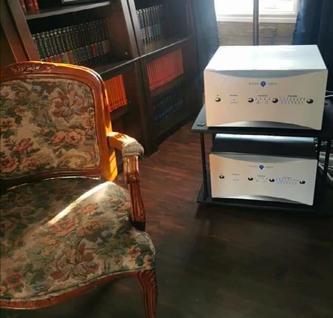




Prices listed are in CA$ unless otherwise indicated.
by Claude Lemaire
WELCOME TO MY SERIES TREASURES FROM THE VINYL VAULT. IN IT, I WILL FEATURE
SELECT GEMS FROM MY APPROXIMATELY 12,000 EVER-GROWING VINYL COLLECTION, ACCUMULATED OVER A 45-YEAR PERIOD AND COUNTING*. THIS WILL NOT BE YOUR TYPICAL “GREATEST OF ALL TIME” LIST, BUT MORE OF A GUIDED TOUR, OCCASIONALLY ACCOMPANIED BY AN ANECDOTE OR TWO, OF THE SINGLES AND ALBUMS IN MY COLLECTION THAT ARE MOST PRECIOUS TO ME, BOTH FOR THEIR HISTORICAL VALUE AND THE IMPACT THEY’VE HAD ON MY MUSICAL JOURNEY. IN ORDER TO COVER THE GREATEST NUMBER OF THEM, I WILL NOT GO INTO MUCH DETAIL ABOUT THE RECORD’S HISTORY OR ITS SOUND QUALITY—FOR THOSE ASPECTS I INVITE YOU TO VISIT MY TOP 500 SUPERSONIC LIST AT HTTPS://SOUNDEVALUATIONS.BLOGSPOT.CA/.
Records will be presented in chronological order based either on their recording date or original release date, and not reissue date—which means, for example, that Miles Davis’ iconic Kind of Blue album will be featured only once, in 1959, despite its many remasterings and repressings over the years. Also, all pressings are US ones unless specified otherwise. If ‘mono’ is not indicated, then consider it stereo or that the stereo version of it is my de facto choice of the two. Let’s continue, shall we?
37- THELONIOUS MONK – BRILLIANT CORNERS. RIVERSIDE RECORDS –RLP 12-226 (1957, APR.), ANALOGUE PRODUCTIONS – AJAZ 12-226 (MONO) (2003), (2×45 RPM), 180G. GENRE: JAZZ, HARD BOP.
You would have to be a monk not to realize what Monk represents to the jazz universe.
He’s been called undisciplined, dissonant, an iconoclast, icon, master, mentor; Monk was all these things and more. Along with Charlie Parker and Dizzy Gillespie, Monk was part of the musical trifecta behind the birth of bebop. Brilliant Corners is, in fact, a brilliant album whose music ofers an introspective peek into a brilliant composer’s creative process. Recorded by engineer Jack Higgins in October and December 1956, and first released on Riverside in mono in April, 1957, the pianist shares the stage with the crème de la crème of the then busy jazz scene—Sonny Rollins on tenor sax, (lesser known) Ernie Henry on alto, Clark Terry on trumpet, Oscar Pettiford and Paul Chambers on bass, and a mesmerizing Max Roach on drums. The album contains five tracks, including the Titanesque title track that opens the album with angular and discordant intervals and strident brass, whereas on “Pannonica”, Monk trades in

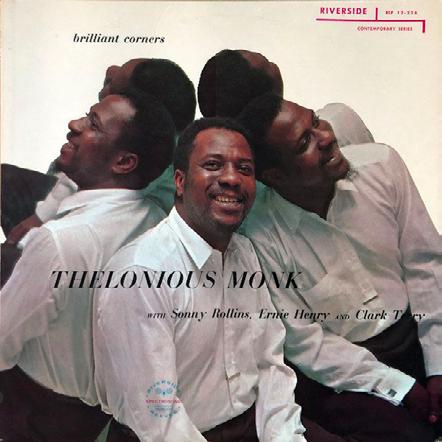
the piano for the delicate-sounding celesta. I don’t have an original pressing, so my copy is the wonderful 2003 Analogue Productions double-45 rpm done by studio engineers Steve Hofman and Kevin Gray, which boasts solid instrumental presence and impactful drums. A stereo version [RLP 1174], which I haven’t heard, was released a year later.
38- CHARLES MINGUS – THE CLOWN. ATLANTIC – 1260 (MONO) (1957, SEPT.), ANALOGUE PRODUCTIONS – APA 06045, ATLANTIC 75 AUDIOPHILE SERIES, (MONO) (2024, JUNE), (2×45 RPM), 180G. GENRE: JAZZ, HARD BOP, AVANTGARDE AND FREE JAZZ LEANINGS.
Part of Analogue Productions’ “Audiophile Series” celebrating Atlantic Records’ 75th anniversary, Charles Mingus’s The Clown is no laughing matter, both because it contains seriously good music and because, as Mingus envisioned it, the clown character on the cover kills himself. Being a big Mingus fan, I already owned several of his records but, oddly enough, not this particular and important one,


and I got it in just last weekend. Comprising four long tracks, of which the grisly title track is narrated by American storyteller Jean Shepherd, the music’s style is hard-edged bop sprinkled with avant-garde dissonant tension throughout. The album follows what is regarded as Mingus’s first masterpiece, 1956’s Pithecanthropus Erectus. “Haitian Fight Song” opens the album with a commanding double bass solo by Mingus. Recorded in mono in February and March 1957 at New York’s Atlantic Studios by engineers Larry Hiller and Tom Dowd, this double-45 rpm edition, superbly mastered by Gray, is an absolute sonic stunner. The tonal texture of Mingus’s instrument ofers one of the best-sounding reproductions of double bass I’ve encountered on record, with just the right mixture of solidity, articulation, and roundness. The saxes, cymbals, and percussion deliver great dynamics and realism, with only the trombone showing signs of mild distortion due to mic or tape saturation during musical crests. A must for Mingus fans!
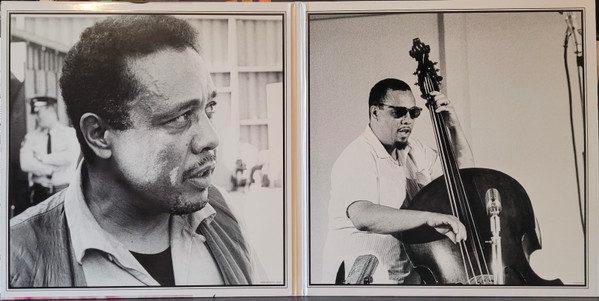
39- SONNY ROLLINS – WAY OUT WEST. CONTEMPORARY RECORDS – C3530 (MONO) (1957, JULY?), STEREO RECORDS – S7017 (1958), ANALOGUE PRODUCTIONS – AJAZ 7530 (2003), (2×45 RPM), 180G. GENRE: JAZZ, BOP.
Among audiophiles, Way Out West is probably the best known title in the Contemporary catalogue, thanks in no small part to Analogue Productions Doug Saxremastered “APJ 008” released way back in 1992. Since then, numerous reissues by
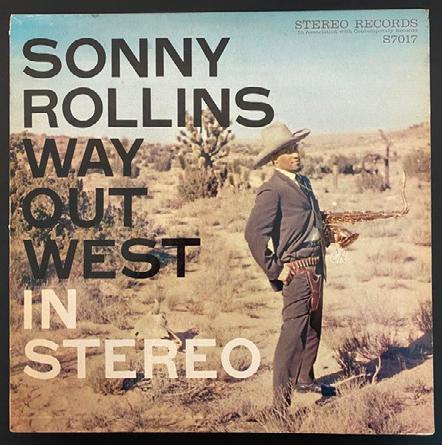
other labels and engineers have appeared at all price points, including around the $400 mark set by The Electric Recording Company [ERC053S] who released only 300 copies of it, with each now fetching up to $800 on the second-hand market. I must confess that the first time I saw this LP cover advertised in a magazine or flyer with the dude sporting that hat and holster, I assumed this must be a country and western album. Even though I was already quite into jazz, shamefully I still hadn’t discovered that Sonny Rollins was one of, if not the, greatest tenor saxophonist of all time. Culled from jazz’s “Golden Age”, Roy DuNann recorded the album in stereo and mono, as was his habit, in March 1957. So why, after all these years, is this album still in such high demand within audio circles? Well, it’s like I said in my preceding installment: “Contemporary and its subsidiary Stereo Records, released reference sound-quality records rivaling anything produced ever since. Plus, the musical artistry is up there
with the very best.” And amid this illustrious group of records, Way Out West is arguably the best-sounding of the lot, and maybe even the best-sounding jazz recording, period! I know that is a bold and polarizing statement but as finicky as I can be about sound, try as I might, I cannot find fault with this recording. All the timbres are spot on, and the musicians materialize right freakin’ there in your room! I first bought that excellent 1992 remaster, but later got the superior-sounding 2003 double-45 rpm edition done by Gray and

Hofman [AJAZ 7530], which had added warmth and presence. That album, too, from it’s original retail price of $50 USD, is now out of print and fetching multiple times its original price on Discogs. For those who don’t want to fork out that kind of dough, Craft Recordings reissued the album in 2023 in a 3-LP box set [CR00434], cut by Bernie Grundman, which is excellent as well, though, for my tastes, not up to the level of the GrayHofman 45 rpm release.
40- THE POLL WINNERS – THE POLL WINNERS. CONTEMPORARY RECORDS – C3535 (MONO) (1957, JULY?), STEREO RECORDS – S7010 (1958), ANALOGUE PRODUCTIONS – AJAZ 7535 (2008?), (2×45 RPM), 180G. GENRE: WEST COAST JAZZ, BOP.
The Poll Winners’ releases are always big winners in music and sound, and their selftitled debut—which would be followed by four more LPs—is probably your best bet

if you want to settle for only one album by this telepathic trio. Guitarist Barney Kessel, bassist Ray Brown, and maven drummer Shelly Manne are at the top of their game in this March 1957 recording done by Roy DuNann and which gave us nine engaging tracks. From the opening note to the final coda, the band plays in lockstep like a squad of Borgs on expresso. Not owning an original

pressing, my number one choice as far as editions goes is the outstanding Analogue Productions double-45 rpm done by Gray and Hofman. A close second in my collection is the much more afordable 1984 Original Jazz Classic [OJC-156] which, in quick comparison with the Analogue Productions edition, sacrifices only a sliver of warmth.



October 18th, MacDonald Room
Holiday Inn Toronto Airport



1
2xHD
A
All that Jazz
Anthem Electronics
Atelier Audio
AudioGroup
AudioWise Inc.
Auris Audio
AV Gear
B
Burmester
E
EARVANA Fest
EQ Audio
F
FiiO
Forte Art and Music
G
Geshelli Labs
GFN Classics
Grado Canada
H
Trillium Foyer
Trillium Foyer
Algonguin D
EARVANA Fest
EARVANA Fest
EARVANA Fest
EARVANA Fest
EARVANA Fest
MacDonald A, B
Trillium Ballroom
EARVANA Fest
EARVANA Fest
MacDonald A, B, Trillium Foyer
S
Sennheiser
Simcoe Audio Video
EARVANA Fest
Algonguin D, EARVANA Fest
SIVGA EARVANA Fest
Sonova Consumer Hearing Inc.
EARVANA Fest
SPL Algonquin A, EARVANA Fest
Stable 33.33 Algonquin A
Audio by Mark Jones Easton
Audio Eden 219
Audio Excellence Bristol B
Audio Group Denmark Carlyle, Sutton B
Audio
(UK)
EARVANA Fest
Trillium Foyer
EARVANA Fest
Hi-Fi Centre MacDonald A, B I Innuos
K
Baetis Audio
Fest
KEF America Algonquin A
Kevro International Inc. MacKenzie
O
OPAL Audio EARVANA Fest
Orchard Audio
P
Fest
Paradigm Electronics Algonguin D
Princess Pasta Audio EARVANA Fest Q
Quebec Acoustique
Bristol A
Bliss Acoustics Plaza B
Bluesound Plaza A, 2_10
Bowers & Wilkins 337, 339, 341
Bricasti Design Ascot
Bryston Atmosphere North
C
Cardas Audio Mayfair
Chord Company 317
Chord Electronics 325, 439
Coherent Audio
Corby's Audio
Bristol A, Carlton
Bristol A, Carlton

DALI
E
Plaza A, 2_10
English Electric 317
Eon Art Canada Mayfair
EQ Audio Sutton B, Sutton C
Erikson Consumer 325, 439
Essentia Technology Inc. 2_1, 2_11
EverSolo 446
Executive
GCI Distribution Ascot
Gershman Acoustics Mayfair, 343
Geshelli
K Kennedy Hifi 445, 446
L Lenbrook Americas Plaza A
M Marantz 337, 339, 341
MartinLogan 311
Masimo Consumer 337, 339, 341
Mission 325
MoFi Distribution 348
Motet Distribution Bristol B, Dixon, 446
Nordost 437, 439
Northstar Audio 350

lobby level

level 2
Ascot Bricasti Design / GCI Distribution
Bristol A Corby's Audio
Carlton Corby's Audio
Bristol B Motet Distribution
Knightsbridge ASONA Ltd
Mayfair Cardas Audio / Eon Art Canada / Gershman Acoustics Oracle/ Audio Technologie Solid Meubles
Plaza A Lenbrook Americas
Plaza B Bliss Acoustics
2_6 Audio Sensibility
219 Audio Eden
2_1, 2_11 Essentia Technology Inc.
lower level
Wynn Audio JVCKENWOOD Canada
lobby level
Atmosphere North
Dixon Audio Note (UK)
Easton Audio by Mark Jones
L_11 PMA Magazine
Sutton A Acora Acoustics Corporation
Sutton B EQ Audio

2_2 QNAP inc 2_3 Anne Bisson
2_4 FiiO
2_8 Six Acoustic
2_8 The Speaker Shop
2_10 The Audio Factory 2_12 ANKits
lower level


level 2

Astell&Kern
Atelier Audio
Audeze
Audience
AudioGroup
AudioWise Inc.
Auris Audio
Campfire Audio
Cardas
Chord Electronics
Crystal Cable
Eleven Audio
EQ Audio

Fezz Audio
FiiO
Focal
Geshelli Labs
Grado
Hiby Music
Ibasso Audio
ifi
Innuos
Kimber Kable
Musical Fidelity
Naim
OPAL Audio
Quebec Acoustique
Sennheiser
Simcoe Audio Video
SIVGA
Sonova Consumer Hearing Inc.
SPL
Thieaudio
Eversolo hotel
Orchard Audio


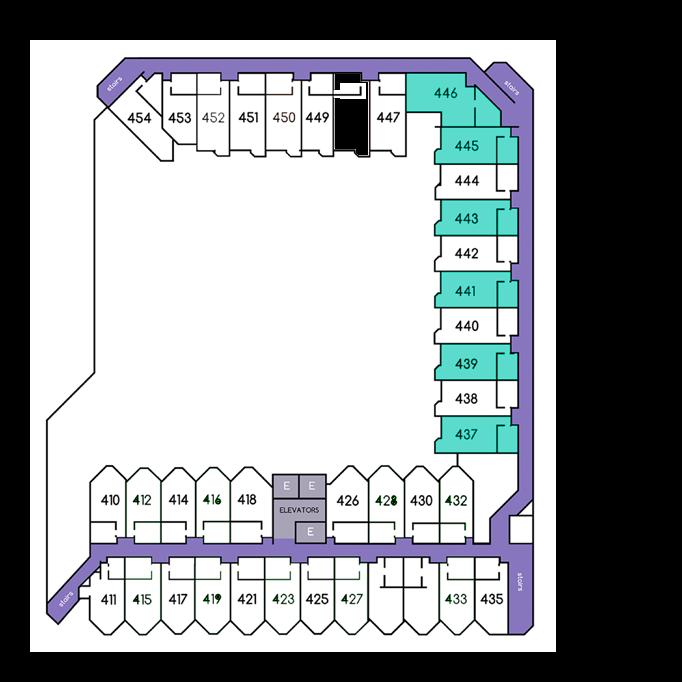

Trillium Foyer
Trillium Foyer
Trillium Foyer
Trillium Foyer
Trillium Ballroom
84 1
2xHD

Trillium Foyer Holiday Inn
432 Evo 352 Westin
a
Aavik Carlyle, Sutton B Westin
Abyss EARVANA Fest Holiday Inn
Abyss Sutton B Westin
Accuphase Bristol B, 343 Westin
Acora Acoustics Sutton A Westin
Acoustic Solid Sutton B Westin
Advance Paris 358 Westin
Aesthetix 321, 360 Westin
Aidas 352 Westin
Allnic Audio Carlton Westin
Analysis Plus Knightsbridge Westin
Ansuz Carlyle, Sutton B Westin
Anthem Electronics Algonquin D Holiday Inn
Antipodes 350 Westin
April Sounds 352 Westin
ASI Carlyle Westin
Assos Woodworking 321 Westin
Astell&Kern EARVANA Fest Holiday Inn
Audeze EARVANA Fest Holiday Inn
Audience EARVANA Fest Holiday Inn
Audience Sutton B Westin
Audio Exklusiv 363 Westin
Audio Physic 321, 360 Westin
Audio Sensibility 2_6 Westin
Audio Space 363 Westin
Audionec Plaza B Westin
AudioNote UK Dixon, 321 Westin
Audiovector Sutton B, 437, 445 Westin
Audiowise EARVANA Fest Holiday Inn
Aurender Plaza B Westin
Auris Audio EARVANA Fest Holiday Inn
Axxess Carlyle, Sutton B Westin
b
Baetis Audio Bristol A Westin
Blok Plaza A Westin
Bluesound Plaza A, 441 Westin
Borresen Carlyle, Sutton B Westin
Bowers & Wilkins 337, 339, 341 Westin
Bricasti Design Ascot Westin
Bryston Atmosphere North Westin
Burmester MacDonald A, B Westin
cCabasse Knightsbridge Westin
Campfire Audio EARVANA Fest Holiday Inn
Canor Lounge Westin
Cardas EARVANA Fest Holiday Inn
Cardas Mayfair, Sutton B Westin
Cayin Knightsbridge Westin
Cen.Grand Knightsbridge Westin
Cerwin Vega 2_8 Westin
CH Precision Easton Westin
Charisma Audio 363 Westin
Chord 325, 439 Westin
Chord Company 317, 352 Westin
Chord Electronics EARVANA Fest Holiday Inn
Cinnamon Audio 352 Westin
Coherent Audio Bristol A, Carlton Westin
Creek Lounge Westin
Critical Mass Systems Carlyle Westin
Crystal Cable EARVANA Fest Holiday Inn
Crystal Cable Carlyle Westin
dDALI Plaza A Westin
Denon 341 Westin
Diptyque Loudspeakers 356 Westin
Dynavector 358 Westin
e
Ediscreation 358 Westin
Elac 321 Westin
Electrocompaniet 321 Westin
Eleven Audio EARVANA Fest Holiday Inn
Elipson 321 Westin
EMT Carlyle Westin
English Electric 317 Westin
Entreq Carlyle, 2_6 Westin
Eon Art Mayfair Westin
Epos Lounge Westin
Eversolo EARVANA Fest Holiday Inn
Eversolo 446 Westin
f
Ferrum Audio EARVANA Fest Holiday Inn
Ferrum Audio 356 Westin
Fezz Audio EARVANA Fest Holiday Inn
Fezz Audio 445, Sutton B Westin
FiiO EARVANA Fest Holiday Inn
FiiO 2_4 Westin
Focal
EARVANA Fest Holiday Inn
Focal Sutton B Westin

f
Fonica Knightsbridge Westin
Fono Acustica Carlyle Westin
Furutech 2_6, 325, 348 Westin
Fyne Lounge Westin
g
Gershman Acoustics Mayfair, 343 Westin
Geshelli Labs EARVANA Fest Holiday Inn
Geshelli Labs 443 Westin
GFN Classics Trillium Foyer, MacDonald A, B Holiday Inn
Gigawatt 363 Westin
Gold Audio 441 Westin
Goldnote 321 Westin
Goldring 2_1, 2_11 Westin
Grado EARVANA Fest Holiday Inn
Graham Slee UK 345 Westin
Grimm Audio 356, Easton Westin
Gutwire 343 Westin
h
Harbeth Audio 219 Westin
Harmonic Technology 2_6 Westin
Hemingway Audio Plaza B Westin
Hiby Music
EARVANA Fest Holiday Inn
HIFIROSE 348 Westin
HRS 321, 352, 358, 360 Westin
i
Ibasso Audio
EARVANA Fest Holiday Inn
Icon Audio UK 345 Westin
ifi
EARVANA Fest Holiday Inn
Innuos EARVANA Fest Holiday Inn
Innuos Knightsbridge Westin
IsoAcoustics 446 Westin
ISOL-8 321 Westin
Isotek 348 Westin
j
JBL 2_8, 325,439 Westin
Jean Nantais 352 Westin
JVC Windsor Westin
k
Kaleidescape Sutton B Westin
Kalista Carlyle Westin
Karan Acoustics Carlyle Westin
KEF Algonquin A Holiday Inn
Kharma 358, 360 Westin
Kimber Kable
EARVANA Fest Holiday Inn
Kimber Kable Bristol B, 441 Westin
Kinki Studio 363 Westin
Kiso Acoustic Carlyle Westin
KLH 2_8 Westin
Kora Audio Electronics 356 Westin
Kroma Atelier Plaza B Westin
Kuzma Carlton Westin
l
Leif 3 437 Westin
Linsoul 443 Westin
Lumin Bristol B, Lounge, 2_6 Westin
Luna Cable Algonquin A Holiday Inn
Lyra Easton Westin
m
Magico Easton Westin
Magnum Dynalab Atmosphere North Westin
Marantz 337, 339, 341 Westin
Martin Logan 311 Westin
Massif Audio Design 356 Westin
Master Built Audio Cables 350 Westin
MAX 2_8 Westin
Melco Lounge Westin
Merason 358 Westin
Metronome Carlyle Westin
Michell Audio 354 Westin
Michi by Rotel Sutton B Westin
Milty 2_1, 2_11 Westin
Mission 325 Westin
MITMAT 321 Westin
Miyajima 352 Westin
Modulum Audio Plaza B Westin
MoFi 348 Westin
Monitor Audio Mackenzie Holiday Inn
Monitor Audio Sutton B Westin
Moonriver 358 Westin
Musical Fidelity EARVANA Fest Holiday Inn
Musical Fidelity Sutton B Westin
n
NAD Plaza A Westin
Nagra 219, Plaza B Westin
Naim EARVANA Fest Holiday Inn
Naim Sutton B Westin
Neotech 2_6 Westin
Network Acoustics 350 Westin
Nordost Bristol A, Easton, 219, 321, 356, 439 Westin
Norstone Sutton B, 325 Westin
o
OePhi 321 Westin
OPAL Audio
EARVANA Fest Holiday Inn
Oracle Audio Mayfair, Sutton B Westin
Orchard Audio EARVANA Fest Holiday Inn
Orchard Audio 443 Westin
85
p
Paradigm Electronics Algonquin D Holiday Inn
Pass Labs 343 Westin
Pathos Acoustics Knightsbridge Westin
Pilium Plaza B Westin
Playback Designs 350, 358, 360, Sutton B Westin
PS Audio Bristol B, 343, 441, 446 Westin
PSB Plaza A Westin
Pure Fidelity 345 Westin
Puritan Lounge Westin
Q Acoustics 321, 2_1, 2_11 Westin
QED 321, 2_1, 2_11 Westin
Qnap 2_2 Westin
QRT 437 Westin
Quadraspire Bristol B, Sutton B Westin
r Reed
352 Westin
Rega Bristol A Westin
Rogoz Audio Sutton B Westin
Roksan Plaza A Westin
Rotel Mackenzie Holiday Inn
Rotel Sutton B Westin
Ruark Audio 354 Westin
s
Saturn Audio Bristol A, Carlton Westin
Sbooster 2_6 Westin
Scansonic Lounge Westin
Seismion 356 Westin
Senna Sound 352 Westin
Sennheiser EARVANA Fest Holiday Inn
Siltech Cables 343 Westin
Simaudio 437 Westin
Six Acoustic 2_8 Westin
Solid Meubles Mayfair Westin
Solid Tech Sutton B Westin
Solidsteel Easton, 348 Westin
SOtM Carlyle, 2_6 Westin
Soulnote Audio 354 Westin
Spendor 325, 439 Westin
SPL Algonquin A, EARVANA Fest Holiday Inn
Stable 33.33 Algonquin A Holiday Inn
Stealth Audio Cables 350 Westin
Stein Music 352 Westin
s Supreme Analog Tonearms 352 Westin
SVIGA EARVANA Fest Holiday Inn
Synergistic Research 360 Westin
System Audio Knightsbridge Westin t
Tektron Audio Carlton Westin
Thales Carlyle Westin
Thieaudio EARVANA Fest Holiday Inn
Thiele Carlyle Westin
Thorens 325, 439 Westin
TIDAL Carlyle Westin
Tiglon 363 Westin
Tivoli Audio Plaza A Westin
Tontrager Audio 219 Westin
Tough Nut Audio Accessories Bristol A, Carleton Westin
Trafomatic 352 Westin
Tri-Art Audio 321 Westin
Trilogy Sutton B, 321 Westin
Trinnov Sutton B Westin
TW Acustic
358 Westin
Vertere Easton Westin
Vicoustic Sutton B Westin
Vimberg Carlyle Westin
Von Schweikert Audio 350 Westin
WAY Cables Plaza B Westin
Weiss
Well Tempered Lab
Westminsterlab
343 Westin
363 Westin
350 Westin
Wharfedale 348 Westin
WireWorld 321, Lounge Westin
Wonder Audio Labs
363 Westin
X-quisite Carlyle Westin
Yamaha
346 Westin
YBA Knightsbridge Westin
Yeti Acoustics
352 Westin
28 au 30 mars 2025

For a deeper connection with your favourite sounds.
Taking the Stereo Music Centres of the 1970s as inspiration, our new R610 Music Console and Sabre-R Speakers, bring this highly popular concept back and completely up to date, with stunning sound and looks that will appeal to music lovers and design enthusiasts alike.
